A History of Clubbing in Bangkok
As the iconic Bed Supperclub closes its doors forever, BK looks back at two decades of long-gone clubs in the city, from Rome Club to Ministry of Sound.

“Names like Diana, The Bubble and The Flamingo flourished during the turn of the decade (70s-80s). This was the very last leg of the elegant era as these were probably the last batch of discotheques located on hotel premises—Diana at The Oriental, Bubble at the Dusit Thani and The Flamingo at The Ambassador. You knew the drill, you had to be decked out, not only to be seen, but to be allowed in. DJs and live local bands took turns, Rick James’ “Super Freak” blasting, the seating (armchairs and sofas) comfortable, and the waitresses—in long side-slit burgundy dresses. If memory serves correctly, Diana was the first in Thailand to employ laser lights. Dancing still took place on the dance floor. Bangkok nightlife was courteous and dashing. Then came The Palace in the early 80s, when everything changed. Discotheques or clubs became independent of the hospitality business and so the grace and charm and style and taste disappeared.”
–Pahd Pasiigon, author
Back before the new age restrictions were imposed by the government, the majority of clubbers were aged under 20. But NASA was designed to provide late-night entertainment for the 20-something crowd. The venue’s design took its cues from the space race to which it owed its name: a huge hangar complete with smoke machines, flashing lights and a sound system blasting dance hits. It was capable of packing in some 4,000 partiers a night.

“Back in my day, the name Narcissus was synonymous with extravagance. Not only was the place heavily inspired by classic Roman architecture—very rare in Bangkok—but their light and sound systems were top of the line. We would usually party somewhere like Deeper first and then head to Narcissus to continue through to 6am in the morning. It was not only partiers like us who would head there from Deeper—the DJs would hop venues, too. ”
– Jakkapat Wongsopa, owner of 2W Café & Hostel Phuket
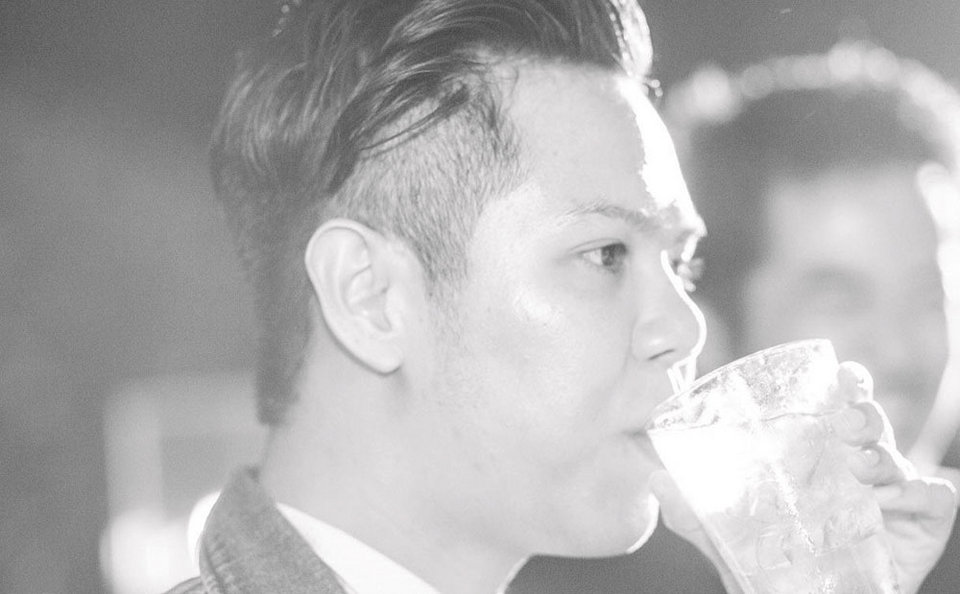
“Located on Sukhumvit Soi 26, to me Taurus was like an old version of Bed Supperclub. The bar consisted of three zones—a live band doing jazz (the diva Maleewan Jemina was the resident singer), a restaurant and a club zone in the middle where DJs spun dance tunes not really like the electro of today. It’s always funny when people complain about expensive drinks today, as when you look back to Taurus’s era, it cost you B3,000 to open a bottle of whiskey with a group of five people maximum. Mixers were B100, too, which is very expensive.”
–Nathan Patcharinsak, freelancer

“In 1992, my dad sent me to Bangkok to get in touch with our Thai roots (on my mother’s side) and after enjoying Bangkok’s favorite pastime during the day, shopping, me and my sisters found ourselves at Silom Soi 4 almost every other night. The jam-packed streets and clubs were interspersed with other luk kruengs as well, some of which remain our friends to this day. There seemed to be no age limit and we often met wild 15 year olds. I wish we could reconnect with some of these old friends today. One of my favorite places was Rome Club. It was located at the end of the soi and was always busy from weekday to weekend and had the best music for dancing. As I love to dance, I found myself dragging my sister or any friends onto the stage while videos played behind us on the wall.”
–Katherina Leili Dreith, consult at Omroom

“Deeper was one of the first clubs for underground raves. It was a very important spot to be seen for the raving subculture and till today a lot of us who partied there still remain great friends. I’m proud to say I witnessed and was a part of the Thai rave scene’s first generation after a group of my friends came back from the US. They brought raving back with them and it continues to grow now.”
–Yung San, PR at Long Table
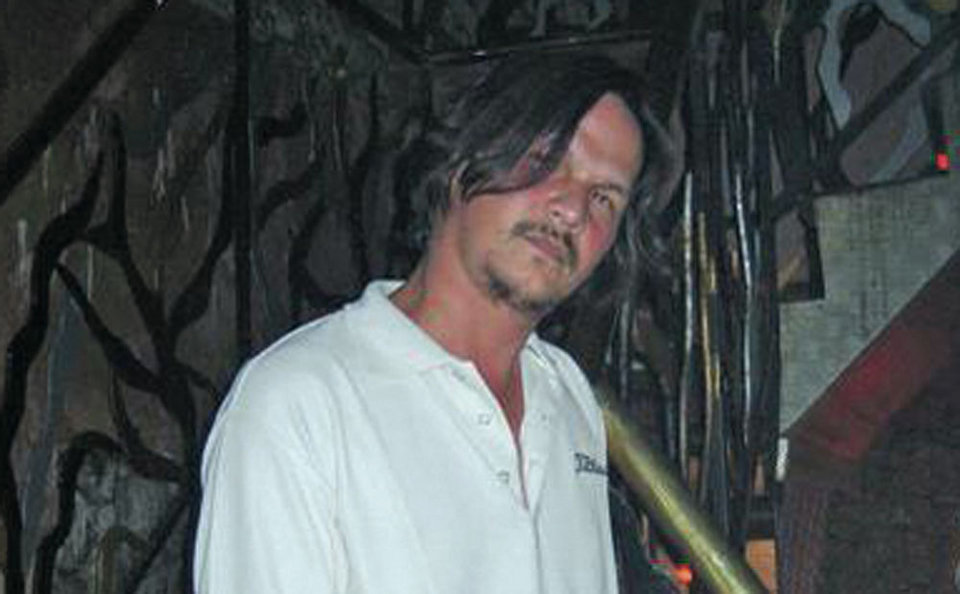
“The popular Lucifer statue in the front would welcome you to the hell-like decor inside: a cave-like club where everything looked melted by hellish fire. It was one of the first clubs (opened in 1998) to play techno trance and close late (5am).”
–Jeffrey Columbres, manager of Bash
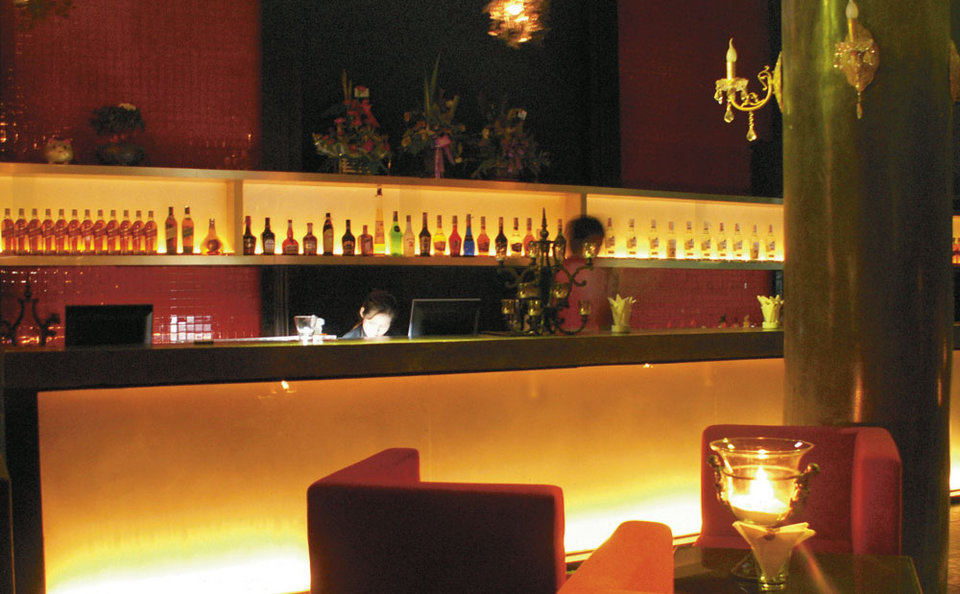
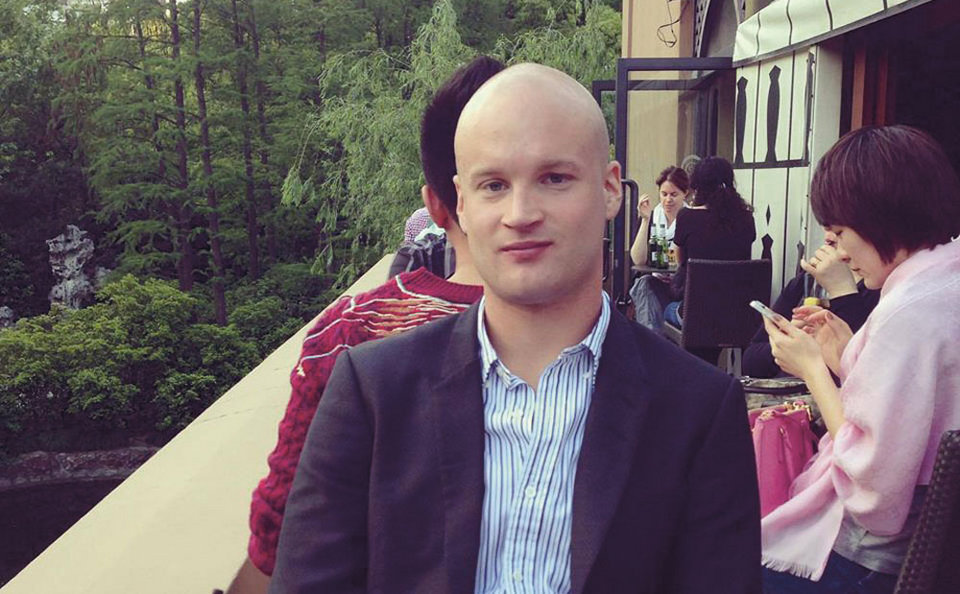 “It opened in the early 2000s under the name Escudo, but changed a few years later to Song Saleung. Escudo then became a pure hip-hop club a little further down the street. Few places on Thong Lor and Bangkok have ever been so popular. Even on a Monday night, you had to get there before 10pm to get a table. On weekends, just forget about it! The parade of eye candy was outstanding night after night. Never seen anything better throughout the whole of Asia. One of the little princesses used to party there with her friends on the second floor, always followed by a bunch of pumped-up bodyguards. A night to remember was Black Label’s wild Christmas party in 2007. After renovations, when it was closed for almost a year, the crowd never really came back. Funky had taken over.”
“It opened in the early 2000s under the name Escudo, but changed a few years later to Song Saleung. Escudo then became a pure hip-hop club a little further down the street. Few places on Thong Lor and Bangkok have ever been so popular. Even on a Monday night, you had to get there before 10pm to get a table. On weekends, just forget about it! The parade of eye candy was outstanding night after night. Never seen anything better throughout the whole of Asia. One of the little princesses used to party there with her friends on the second floor, always followed by a bunch of pumped-up bodyguards. A night to remember was Black Label’s wild Christmas party in 2007. After renovations, when it was closed for almost a year, the crowd never really came back. Funky had taken over.”
–Johan Hammar, project coordinator
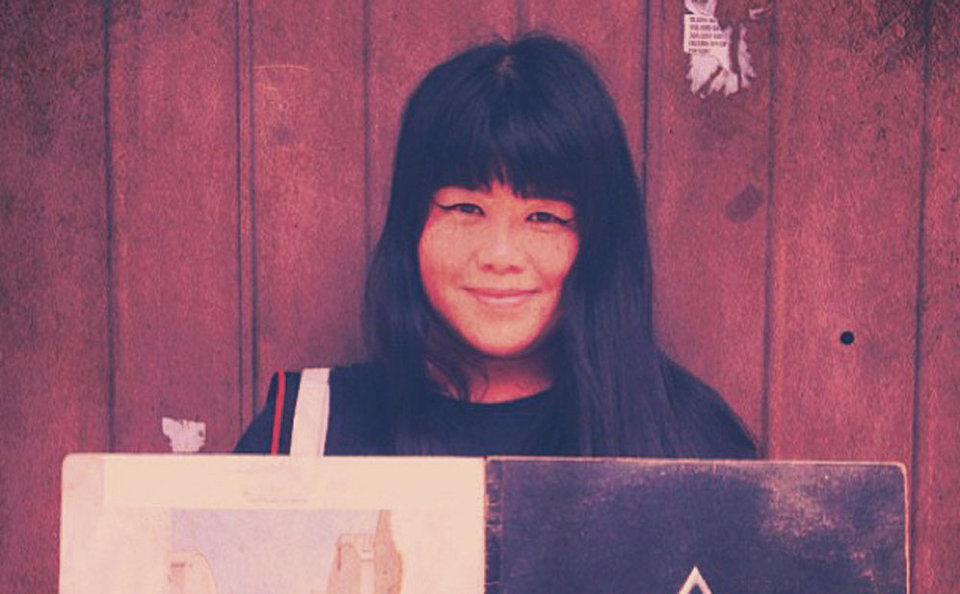
“Club Culture was epic. The owner came up with the idea of doing a uni night every Wednesday, allowing students to host their own parties. This was the beginning of the indie-rock/underground scene. At a time when every place seemed to be about trance and hip hop, Club Culture was the only venue offering diversity and it spawned many party collectives like Dudesweet, Club Soma and Happy Alone. On top of that, the owner started bringing in international DJs and launched the Culture One International Dance Music Festival. Café Democ and Club Culture were quite similar, with Café Democ set in a unique and charming location around the corner of Ratchadamnoen Road.”
– Som Tum, co-founder of the Goodcat collective
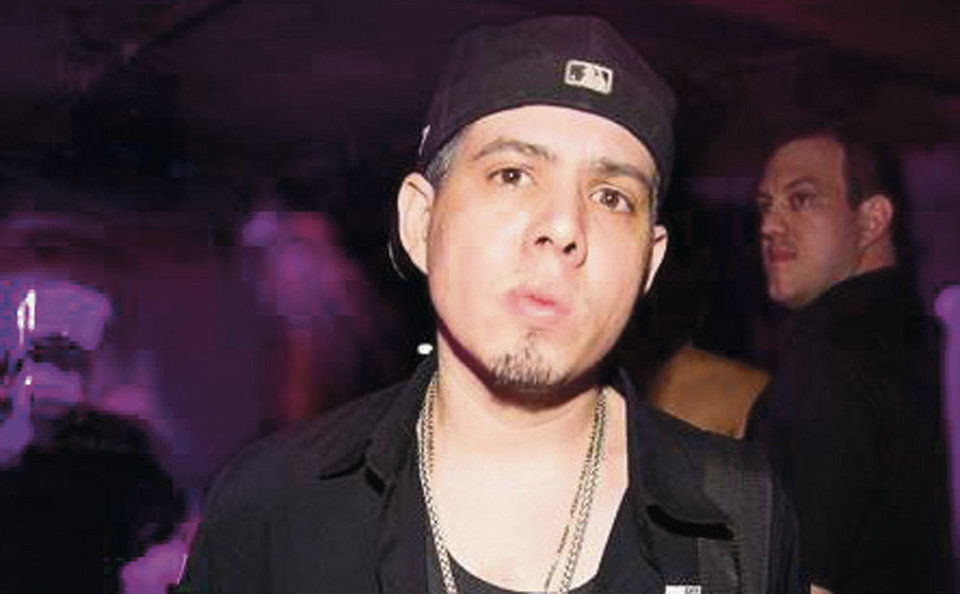
“Ministry of Sound was absolutely massive. The second floor was VIP and you could look down on the dance floor. They came into Thailand with this ‘We invented clubbing, we know what we’re doing’ attitude, ignoring the locals. Huge dancefloor, no tables on it—completely alien for Thais. No one used the dancefloor except when huge DJs like Paul Oakenfold or DJ the Housecat came in. The huge events were fantastic. I saw Oakenfold, this very famous DJ, and he was just standing on stage with his hands in the air. A press-play DJ—none of his equipment looked like it was plugged in. He was signing autographs, hugging girls, not really DJing. It was ridiculous. The place lasted one year and one month. It’s a massage parlor now.”
– Matt Hammond, marketing and PR director at Q Bar

“Deeper on Silom Soi 4 was the very first place that got me into electronic music—it was the first rave bar in Bangkok where no one cared about social status, just came to have fun. Then there was Café Democ in 1999. The original Café Democ was really genuine, from the venue’s charming old architecture to its everything-goes music policy taking in hip hop, drum n’ bass and trance. People simply came for the music—I think no one creates such a vibe anymore.”
– Mongkorn Timkul, aka DJ Dragon
Social Order Kicks Off:
As part of his Social Order campaign, Prime Minister Thaksin Shinawatra orders the creation of three “entertainment zones.” In these zones, drinking and dancing is only allowed until 2 am: roughly Silom, Sukhumvit, and Ratchada. Outside of these zones, dancing is illegal and closing times are 1 am. The implementation of his rules would take a couple more years, with things getting really strict by the mid-2000s.
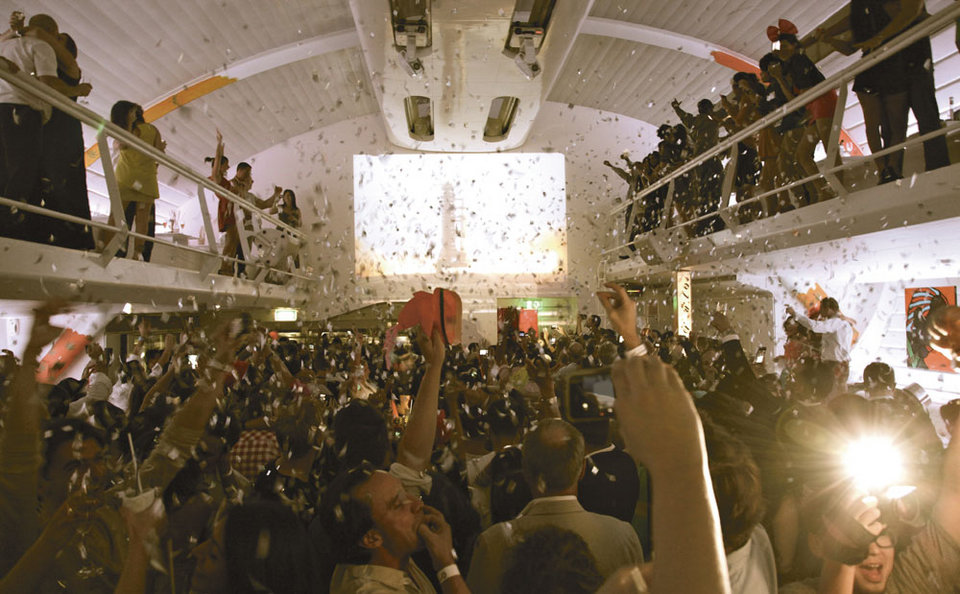
Long-standing nightclub and restaurant Bed Supperclub will close its doors August 31, 2013, after operating for nearly 11 years. The iconic venue was famous for its bold architecture (a kind of cylinder on stilts), its constant efforts to bring in big name DJs and edgy artistic performances which took place during dinner while guests reclined on white beds.
After the club’s lease expired, the landlord did allow it to stay “until further notice.” But given the uncertainty of the situation, Bed Supperclub was unwilling to perform the renovations it felt the club needed to stay competitive, renovations creative director Sanya Souvanna Phouma says would have amounted to a B30 million investment. Meanwhile, new openings such as Above Eleven, Levels and extensions to Q Bar, made Bed Supperclub appear increasingly static.
“I’m very, very sad,” says Sanya about closing. “But honestly, Soi 11 has changed. The experience isn’t nice. You have to walk past guys drinking out of vans to get here. When we moved in, the soi was all houses with gardens. There was nothing except Q Bar. Even if we contributed to changing the soi, it’s just not what we’re about anymore.”
Divided into two sections, one purely used as a nightclub, the other hosting dinners and performances, Bed Supperclub is a totally unique proposition, one with no real equivalent in Bangkok. Recently, diners sprawled on the club’s massive bed-like sofas were treated to an intimate concert where Gene Kasidit sang in furs, flirtatiously worked the crowd with a gin tonic in hand, and ultimately collapsed for her finale in a red couch that had been set in the middle of the room.
“I don’t think there’s a single greatest moment for me,” says Sanya. “There are so many. The Laurent Garnier set where he turned all the lights on full-blast for 10 minutes, and everyone had their hands in the air the whole time. Billy Cobham, one of the greatest jazz artists for me. And there was this dinner where we had performance artists take all the leftovers, mix them in a giant vat, and make these perfectly packaged little samples for people to take back home. One diner was so offended, he asked for a refund.”
Bed Supperclub would have turned 11 years old six days after its Aug 31 farewell party. “We’re proud of having put Bangkok on the map in terms of clubbing, food and culture. We want to maintain the brand and our DNA and hold on to that for the next one,” Sanya says. (More about Sanya in his First Person interview, page 37)
Age Restrictions: The Ministry of Interior imposes new age restrictions for attendees at clubs, from 18 to over 20 years old.
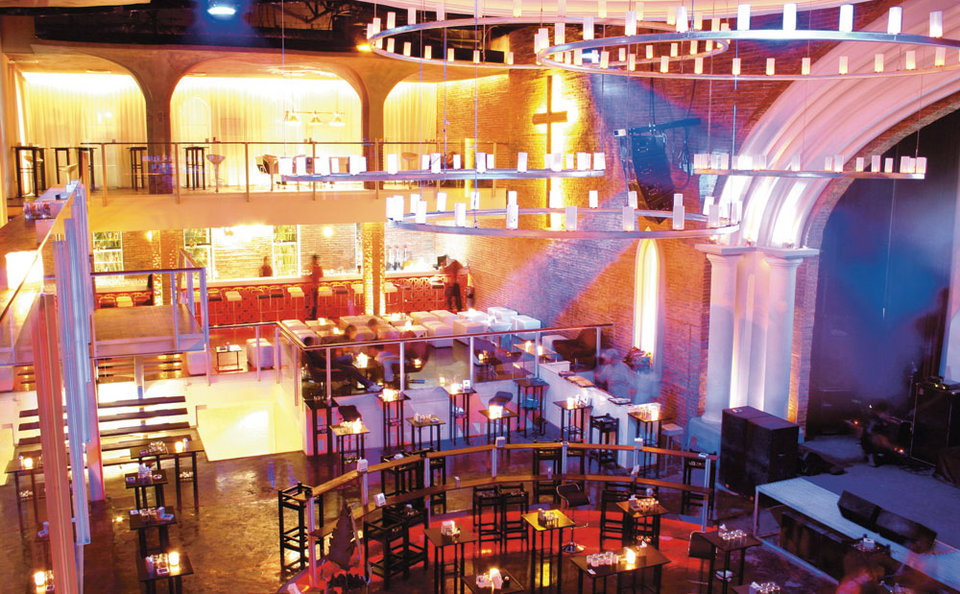
Santika was another club that was really hot and full seven days a week. The club focused on hip-hop with what some described as a Thai version of Eminem performing each night. After completing some major renovations, however, Santika seemed to lose its aura. It became a hangout for freelancers, tourists and guys who went there with their mia noi. The club came to a tragic end when a fire on New Year’s Day 2009 killed 60 people.
Closing Hours: The Ministry of Interior begins the year by enforcing Thaksin’s new closing hours for venues. Places registered as restaurants must close no later than midnight, while clubs have one additional hour, up to 1am.
“It was cute and charming because it was a small place where everyone who partied there easily got to know one another. These friendships have stuck with me to this day. I remember going there after class, arriving before the owners and going home after them too. I got to know all the waiters and would even have an after-party meal with them. You just can’t find that atmosphere these days. The first version of Kluen Sak, on Sukhumvit Soi 24, was not a gay bar as it later turned out to be when it moved to Lang Suan.”
– Thanonrat Panthongprasert, business owner
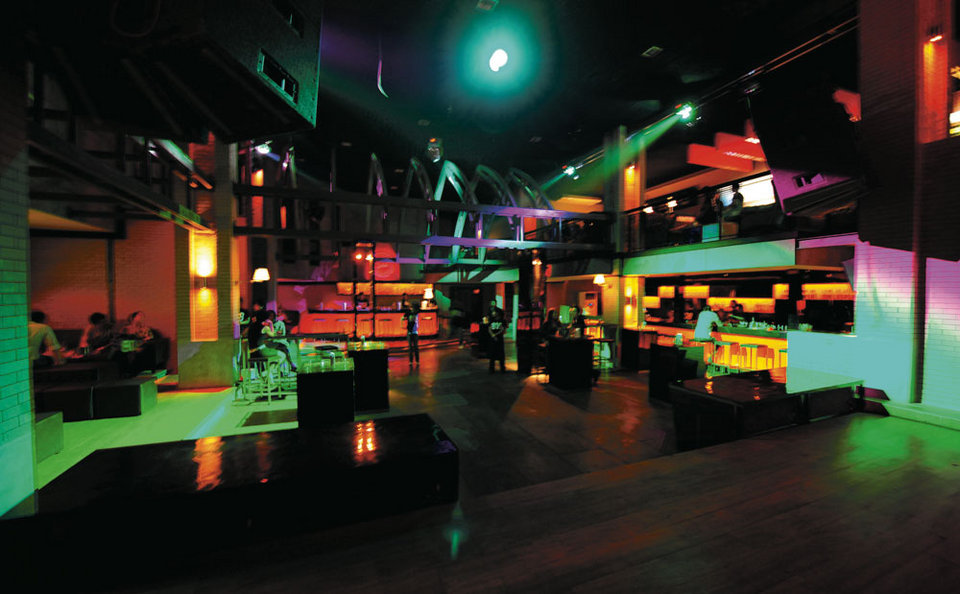

“I would often play at Astra, which had a similar vibe to Café Democ. It’s not that it wasn’t good, but with a bigger space, you never quite got the same vibe. It was great when a big international DJ came to perform, but normal nights could be very quiet.”
– Mongkorn Timkul aka DJ Dragon
Smoking Ban: The Ministry of Public Heath Thailand officially bans smoking indoors at all clubs and restaurants. Venues with outdoor sections must designate smoking and non-smoking zones.
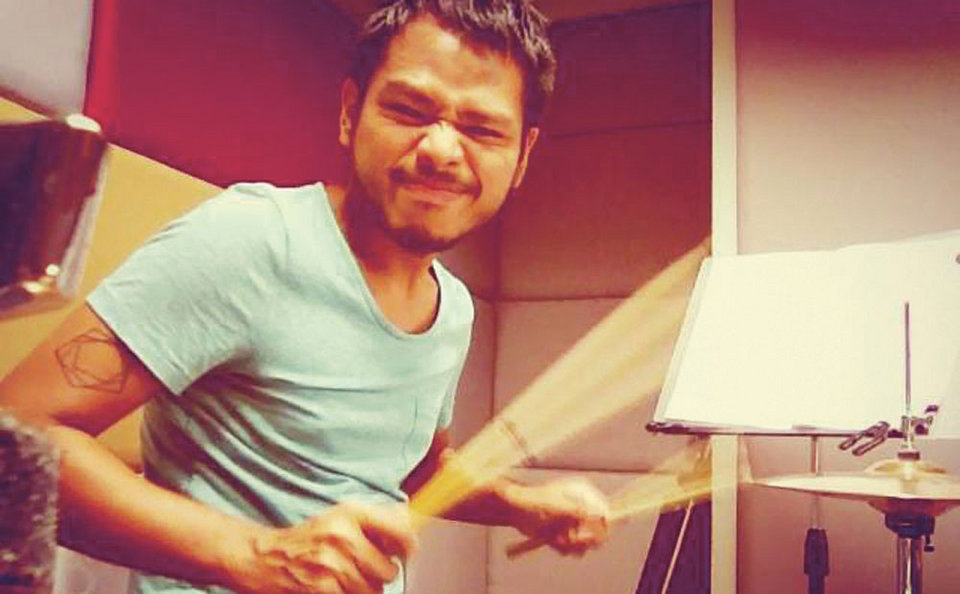
“Unironically ramshackle, life-threateningly chic, Rain Dogs was an unlikely bar in an unlikely location. Set in a random cul-de-sac adjacent to a highway, Rain Dogs was essentially where mo lam monthly shindig Paradise Bangkok began to take shape (back when they were still handing out a shot of ya dong to confused punters). This was where the bartender let you whip up your own drinks (only because he didn’t know how to make anything other than vodka and soda), and Maft Sai was DJing near a dried-up swamp filled with vicious mosquitos. It was where Bangkok’s crème de la crème of freaks and misfits could truly call home.”
– Chanun Poomsawai, freelance writer
“I was working as a freelance marketer at Hype Bar (now Ice Bar) on Thonglor, but I would sneak away to chill around at Sode Samo most of the time. The place was epic. So many memories. A lot of it was down to the vibe of the old house. It may have been the first in the area to be turned into a club. It was like drinking at your friend’s place where you didn’t need to get all dressed up—and you could be as crazy as you want!”
–Kannathakorn Rattanawenawatee, digital planner
After Nung Len revived the live music scene in the area, a number of other similar venues sprung up. Curve quickly became the place to go for live gigs from rock luminaries like Nuvo and J-Jetrin, while Jet Bar (now Sonic Ekkamai) hosted its own resident bands. Sode Samo had perhaps the most character, transforming an old house into a club (not a chill bar like others) with a focus on retro tunes. It was very hot there for a few years in the mid-2000s. The techno room to the left after the entrance was for a while Bangkok’s best in the genre, even though they had to close at 2am, customary around Ekkamai/Thongor.
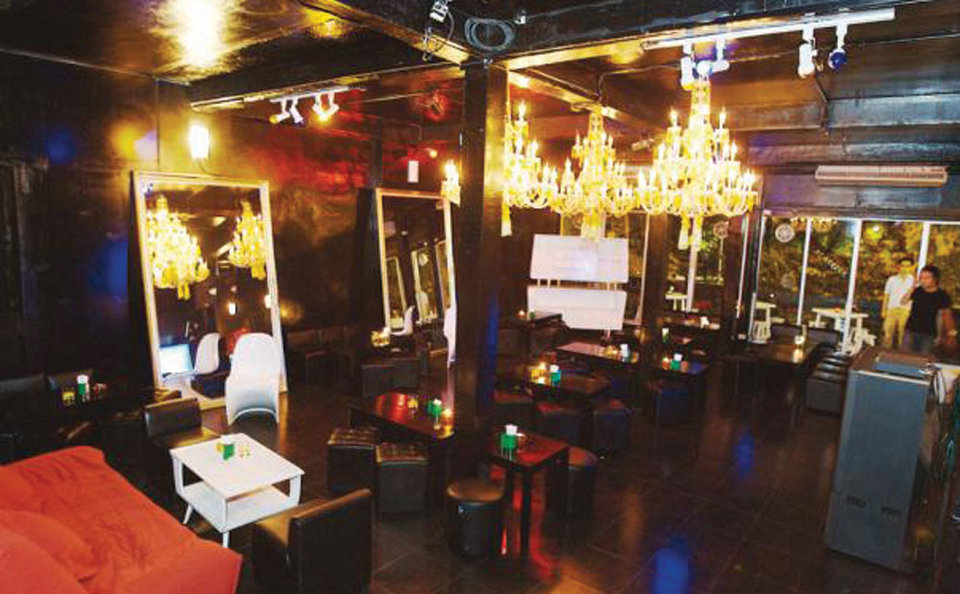
 “My friends and I usually hung out at 70s bar in Langsuan, long before it turned into a gay bar. It was hot and happening at that time, back in 2004. We went since it was not so popular—then the place was exploding. Tables needed to be booked a week in advance, which was unusual back then. The bar was a small two-story place without much in the way of decor but it attracted lots of people with its good selection of 70s music and great crowd of young professionals. They had both live bands and DJs. There was nothing fancy about the drinks, every table would just have Black Label, which you would offer to any new friends you made that night—that’s how we increased our circle of friends so rapidly! Other places sprung up in the area, too, since 70s Bar couldn’t handle the crowd.”
“My friends and I usually hung out at 70s bar in Langsuan, long before it turned into a gay bar. It was hot and happening at that time, back in 2004. We went since it was not so popular—then the place was exploding. Tables needed to be booked a week in advance, which was unusual back then. The bar was a small two-story place without much in the way of decor but it attracted lots of people with its good selection of 70s music and great crowd of young professionals. They had both live bands and DJs. There was nothing fancy about the drinks, every table would just have Black Label, which you would offer to any new friends you made that night—that’s how we increased our circle of friends so rapidly! Other places sprung up in the area, too, since 70s Bar couldn’t handle the crowd.”
– Vanviva Bhumibhanit, civil servant

 “In Thonglor-Ekkamai, Song Salueng led the live band movement, which saw more and more imitators pop up—however, it was a generally short life cycle. Nung Len and Escobar, which exist to this day, arrived as Song Salueng was in decline, quickly becoming the top venues for Thonglor-Ekkamai party people. At Nung Len, the daily live bands would draw a packed crowd on weekdays and weekends alike. Then Escobar arrived, taking in spillover from Nung Len, but with more of a focus on hip hop and electro rather than cover bands.”
“In Thonglor-Ekkamai, Song Salueng led the live band movement, which saw more and more imitators pop up—however, it was a generally short life cycle. Nung Len and Escobar, which exist to this day, arrived as Song Salueng was in decline, quickly becoming the top venues for Thonglor-Ekkamai party people. At Nung Len, the daily live bands would draw a packed crowd on weekdays and weekends alike. Then Escobar arrived, taking in spillover from Nung Len, but with more of a focus on hip hop and electro rather than cover bands.”
– Wanitsada Kumnungkit, guest service supervisor

 “Actually, I only really became addicted to Silom Soi 2 these past couple of years, but have heard about how great the place was for basically all my life. I think the reason Silom soi 2 is so popular and has been so for so long is it’s the only Soi filled entirely with gay bars meaning you can go barhopping as if they were all owned by the same owner. Silom Soi 2 is also where the saying gay gam poo [muscled gay] was invented and we always say yak kin poo tong pai soi 2 [go to soi 2 if you need some crab].”
“Actually, I only really became addicted to Silom Soi 2 these past couple of years, but have heard about how great the place was for basically all my life. I think the reason Silom soi 2 is so popular and has been so for so long is it’s the only Soi filled entirely with gay bars meaning you can go barhopping as if they were all owned by the same owner. Silom Soi 2 is also where the saying gay gam poo [muscled gay] was invented and we always say yak kin poo tong pai soi 2 [go to soi 2 if you need some crab].”
– Achirawut Techawong, Business Owner
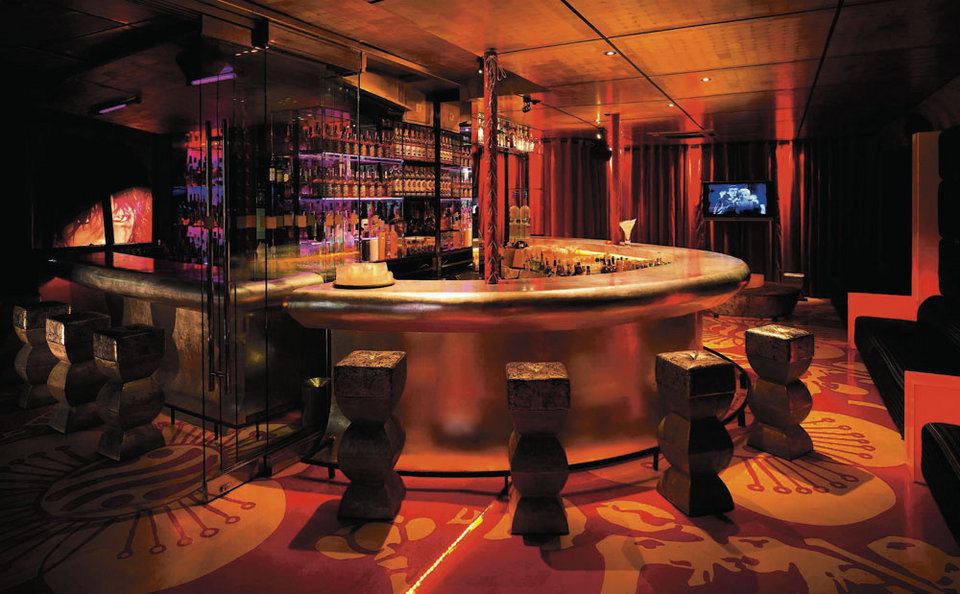
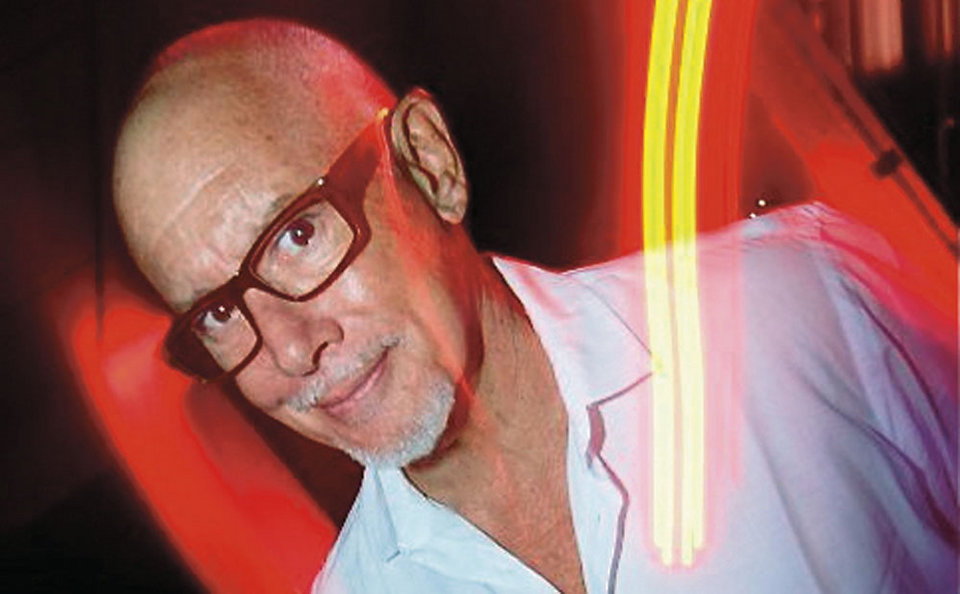 “I had a Q Bar in Saigon and the government threw me out of the country. I guess they weren’t happy an American had a club in the national theater. They never let me back in, so I eventually decided to open a Q Bar here. I had a friend, Andrew Clark, who was in advertising who helped me. I’d looked at Singapore and Hong Kong but way back then Bangkok only had beer gardens, hotel bars, go-go bars and hiso Thai bars. People didn’t know much about alcohol and music. We did like the music at Tapas, but we didn’t like how small it was and the drinks. So we decided to do our own club and really train the staff about alcohol. We were excited to make it look like a club in New York. We wanted people to focus on the inside. We had the most vodkas—no one else had that—and DJs. I have so many great memories, it was great having Ice T there, who hung out in the bar for a week. I even had my wedding reception at Q Bar.”
“I had a Q Bar in Saigon and the government threw me out of the country. I guess they weren’t happy an American had a club in the national theater. They never let me back in, so I eventually decided to open a Q Bar here. I had a friend, Andrew Clark, who was in advertising who helped me. I’d looked at Singapore and Hong Kong but way back then Bangkok only had beer gardens, hotel bars, go-go bars and hiso Thai bars. People didn’t know much about alcohol and music. We did like the music at Tapas, but we didn’t like how small it was and the drinks. So we decided to do our own club and really train the staff about alcohol. We were excited to make it look like a club in New York. We wanted people to focus on the inside. We had the most vodkas—no one else had that—and DJs. I have so many great memories, it was great having Ice T there, who hung out in the bar for a week. I even had my wedding reception at Q Bar.”
– David Jacobson, Q Bar founder & partner
Advertisement

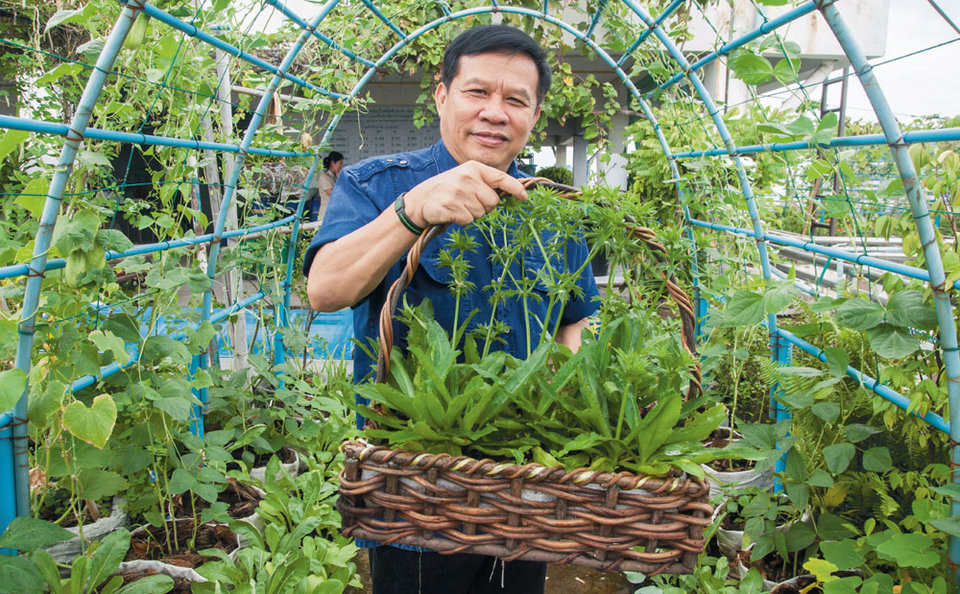 - Lak Si District Office
- Lak Si District OfficeHow did the project start?
Eleven years ago, the staff at the Public Cleaning and Public Park sections of the district, started growing vegetables on an abandoned plot next to the district office. But when the landlord saw the vegetables, he claimed his land back. The section director at that time then told us, OK, you can grow your vegetables on the roof of the office. Then the ex-assistant director created a website about the whole process and it became this free public education thing.
Is it difficult?
You must prepare the rooftop first. The floor has to be absolutely watertight. You have to be motivated to eat good, safe food. As for the rest, just come here and we’ll teach you. It’s free. You can even organize a field trip for your company.
Why is farming in the city important?
Our country’s food safety is not very good. There are too many chemicals used in our food. Food is man’s first medicine, it’s what keeps you healthy. I think growing your own food will be increasingly embraced in the future. It’s sustainable. When there were big floods in 2011, our district was a shelter for flood victims. We could provide them with food and vegetables thanks to our rooftop garden. Farming in the city also helps our city be greener and cooler. It increases our quality of life.
Contact: 02-576-1393 www.bangkok.go.th/laksi

- Rooftop or concrete garden techniques
- How to produce micro-organisms for vegetables
- How to produce manure
- How to produce fertilizers for vegetables
- How to grow bean sprouts
- How to grow seeds
- How to raise earthworms
- How to grow straw mushrooms in a basket
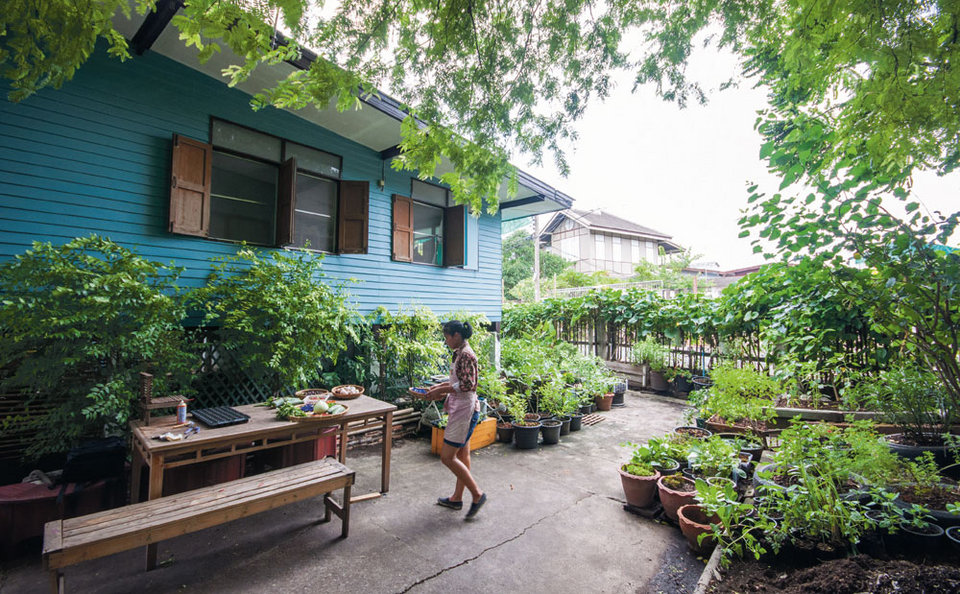
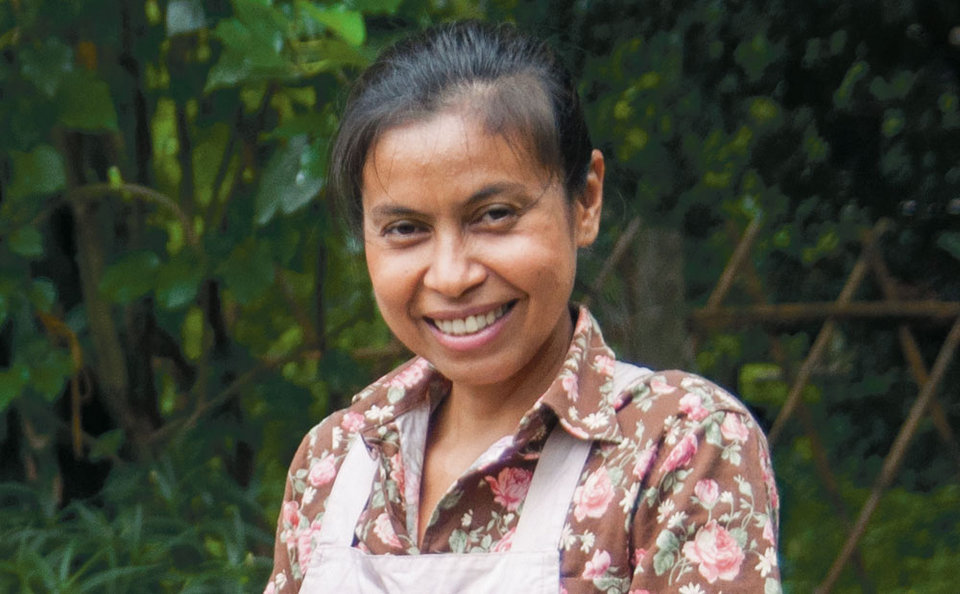 - Home Farm
- Home FarmWhy did you start your farm?
It’s a perk of doing my own magazine, Simply Living. I used to work so hard as a magazine writer. Closing an issue every 15 days was really exhausting. Stress finally made me sick. I couldn’t sleep at night, had headaches and suffered immune system problems. I started studying about living healthy by eating good food. It helps a lot. Starting Simply Living exposed me to more wellness research. Finally, I rented a house in Ladprao Soi 48 and transformed it into a little farm where I grow everything I want to eat.
How has it transformed your life?
Completely. I used to be an employee who spent most of her time working. Now I have time for myself, too. I wake up at 6am, take my kids to school, come back to do some gardening and then start my work as a freelance editor. I also have small coops with chickens and ducks so we can collect their eggs everyday. I don’t really need to go out from my home as I have all this food at my place. Sometimes, my neighbors also come to buy some produce such as eggs and vegetables. It’s organic and we sell it really cheap, like B5-B10 a piece. We also try to spread the word by holding workshops on growing in the city as well as recycling junk to create accessories. We are also planning on re-launching Simply Living as everything stopped due to the 2011 flood.
Why is growing your own food important to you?
Most people will only change their life if something drastic happens, such as beign diagnosed with cancer. But why do you need to wait for problems in order to change? Choosing a healthy way of life is pleasant. Eating your homegrown vegetables is awesome and you will be so proud of what you create. It’s definitely a better feeling than eating expensive food anywhere else!
Contact: 082-520-0308 or Facebook: www.fb.com/simplyorganicsBKK

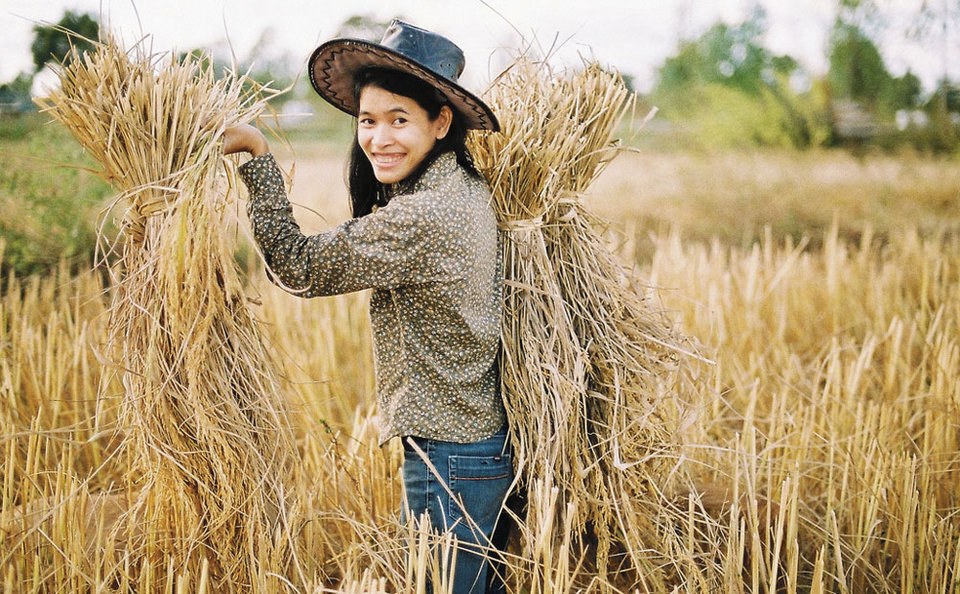 - Raithong Organics Farm
- Raithong Organics FarmWhat is the goal of your CSA project, the Munching Box?
It’s a tool for converting more farmers to organic farming, and getting existing farmers to increase their organic acreage, as well as provide a stable and growing channel for suppliers. Obviously this is a bit different to how customers see it—a product in its own right—but these are mutually supportive views. We need customers to achieve our aims and customers want the Munching Box to get better and better.
What are your accomplishments regarding the Munching Box?
It is developing into a larger platform for the organic lifestyle. Our current retention rate for the CSA box is about 70-75%, depending on the season, which I believe is about average for such programs in the US. Up to July 11, 2013, we delivered 23 tons of seasonal organic fruit and vegetables. We do our best to source only local, high quality, artisanal products—using organic ingredients wherever possible and also working with suppliers to go green with their packaging.
What’s your plan in the next 5-10 years?
We’re working on improving the transparency of our value chain by building upon our rice planting/harvesting trips, hosting food events and giving lectures at schools. The next step will entail building up the agro-tourism side of things, developing a farmer-to-farmer, customer-to-farmer organic certification system, implementing random pesticide and nitrate testing, improving the nutrient density of our products, ramping up our involvement in urban agriculture (through the new BeeKK initiative, www.facebook.com/BeeKKUrbanBeekeeping) and so on. And in the longer run, we also hope to be able to expand to other locations in Thailand and ASEAN once we’re happy with our current model in Bangkok.
Contact: www.raitongorganicsfarm.com

Raitong (www.raitongorganicsfarm.com) is doing a community-supported agriculture (CSA) box under the name CSA Munching Box, which also comes with a few helpful recipes. Monthly subscription is B2,000 plus a weekly delivery charge starting from B60.
Health Me is not only a good healthy restaurant, they also support farmers with their CSA Box (B4,200 for 12 baskets) sourced from provinces like Ang Thong. In front of Ratburana Soi 30, 086-332-8266. Open Mon-Sat 9am-5pm.
Located in Vipawadee Soi 22, Saijai offers various activities for kids to learn about their vegetables and how to grow them, as well as food delivery with a changing menu depending on the produce they get from the farmers and their home garden. Vipawadee Soi 22 (behind St. John University), 087-915-3440. www.saijaihealthyfood.com

 - Goat Milk Farm
- Goat Milk FarmWhy start a goat farm?
I love goats. I played with goats since I was a kid as my granddad raised some in our backyard. But then he stopped, and it’s so hard to find goat milk in the city. So five years ago, I started trying to find goat breeders in the Muslim communities around Bangkok. I found two goats to start with and now I have nine.
How much do you produce daily?
We can milk about 8-10 liters per day. After we milk the goat in the morning, we will steam it at 70-80 degrees Celsius to pasteurize it. We are a big family so we normally keep about five liters to consume. The surplus we sell to our neighbors who come to pick it up every day.
Is it hard to have farm animals in the city?
Yes. We have to pay more attention to cleanliness. Controlling the smell is the most important thing. We put EM [effective microorganisms] solutions in the dung to get rid of the smell. We also clean the goat before we milk them to get rid of their strong aroma, which can get in the milk, too. We then make sure the milk goes straight into a bottle. It reduces the milk’s contact with air as milk absorbs smells quickly.
Why go through all this effort?
It’s safer. Goat milk is full of nutritional value, more than cow milk, but it’s more expensive, too. Cow milk is B25-B40 per liter while goat milk is B70-B100. Kids allergic to cow milk can drink goat milk, too. I raised my two children with goat milk. I wouldn’t give it to my children if it wasn’t good for them. You don’t have to worry about food safety if you have your own farm.
Contact: Piramit 081-689-8061

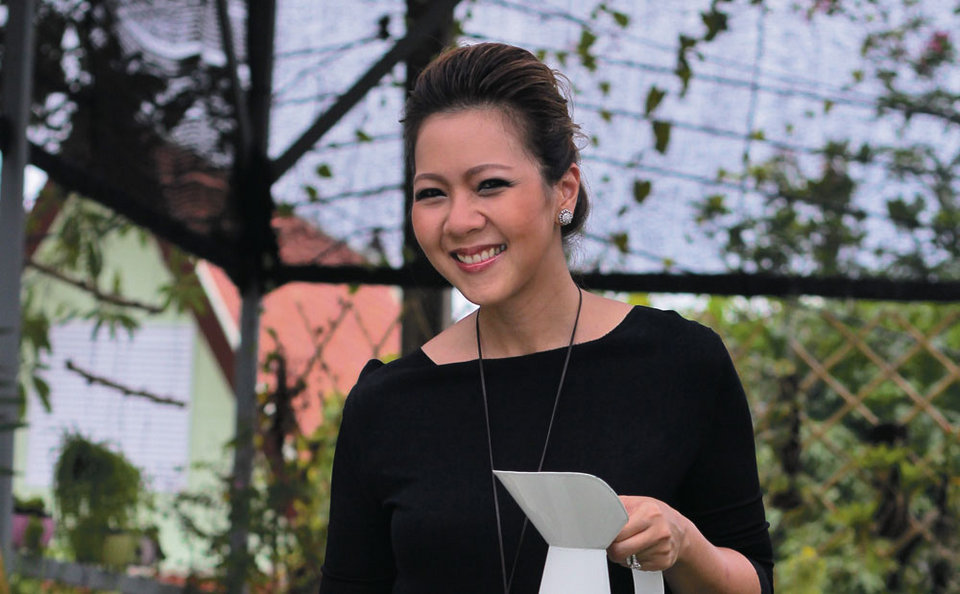 - English Herb Garden
- English Herb GardenWhat inspired your rooftop garden?
I like English-style herb gardens. I have so many vegetables and herbs like rosemary, holy basil and eggplants and you can always mix them with flowers to make the garden more colorful.
What’s the best thing about growing your own vegetables?
I get to create new dishes all the time, which nowadays I share on my Facebook page (www.facebook.com/praekitchen), too. The new recipes are dependent on our new produce; just recently, I did baked rice in grape leaf. It was fantastic, very aromatic. I never knew that grapes grew so easily. Our dog, Herky, also loves eating all the vegetables and herbs.
What’s your favorite easy-to-follow recipe?
For a nice refreshing drink, I always pick out rose petals from the garden. You take two rose buds, 170 grams of lychees, one teaspoon of rose syrup and four pieces of peach. Mix them in the blender and you’re done.
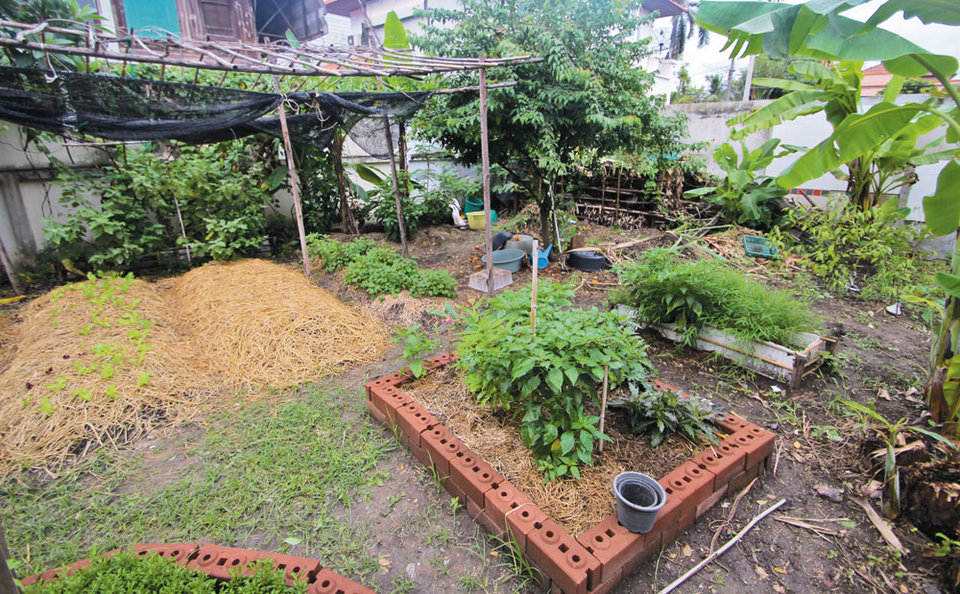
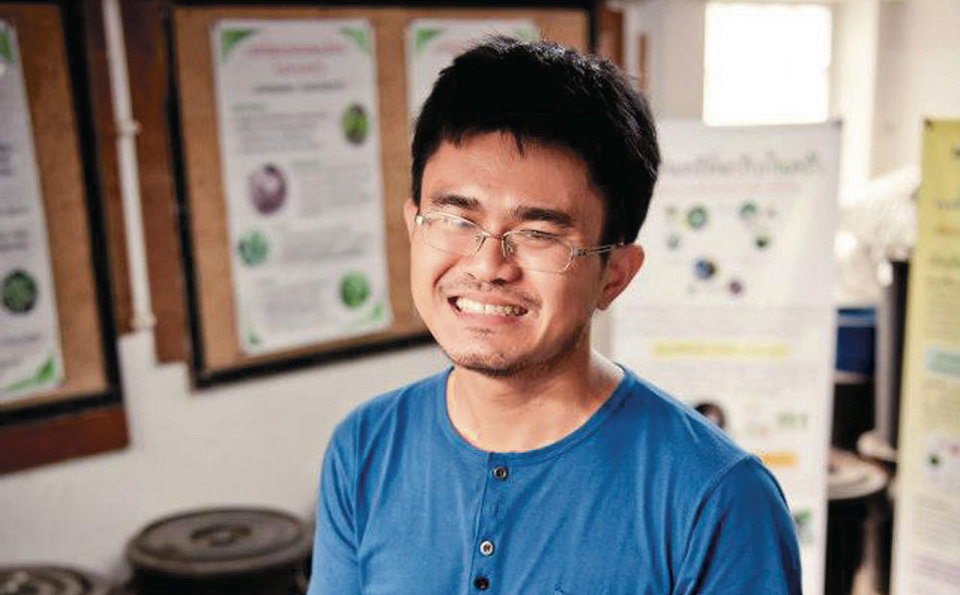 - Thai City Farm
- Thai City FarmWhat got you started?
Even though I studied agriculture during my Bachelor’s and Master’s degrees, many of the classes taught us to use chemicals to grow vegetables. But there was a class about sustainable agriculture which sold me on the idea of being self-reliant. It’s good for our health and for the environment. I wanted to buy land out of town and grow food there but my family still lives in Bangkok, so I had do it another way.
What are the benefits?
It’s more than just the feeling of achieving something. It’s a journey where you meet new friends and a new community. The vegetables are definitely more delicious, sweeter and crispier. My mind is free when I’m in the garden. I grow so many vegetables that often I have to give them away to others—and that’s a source of joy.
What’s the most important thing about growing vegetables?
Everything matters. But what people might not is the importance of soil. Natural soil produces the most beautiful plants. It’s like in the jungle where everything grows and fertilizes itself.
What are the difficulties of vertical planting?
It gets very dry real quick. But if you have good water management, it will be fine. The important thing is to cover the soil with the leaves to maintain moisture and to protect the soil when you water them. Some plants love their soil a bit dry and it is fun observing the different conditions that different vegetables prefer.
Do you think Thai people still relate to the pak suan krua (literally “vegetables from garden to kitchen”) ideology?
This was more noticeable during the government of Plaek Phibunsongkhram when the economy was not at its best and people still had their own land. About 20 years ago, bio-organic consumption boomed along with Lemon Farm shops. As time goes by, we sometimes forget but, hopefully, places like the Lak Si District Office prove that we can still grow our food in limited spaces.
Contact: www.thaicityfarm.com

 - Saijai Healthy Food
- Saijai Healthy FoodHow did you start growing your own food?
My husband and I always thought we could control our lives before my husband found out he had cancer. The doctor said that there was no need to change his lifestyle, but we disagreed. We took issue with our food. Cutting out chemicals from your diet is easier said than done, so we started building networks among people who shared similar ideas and began to grow our own. We then started a food delivery service with produce from these farmers and from our own farm.
What are your tips for growing vegetables?
It’s about having a heart, to start with. There’s actually not much to learn. Just don’t expect too much and let nature do its job. The fun is ing experiencing it for yourself. If vegetables grow in their proper season, they will turn out beautifully. Also, grow vegetables that encourage you—for some, growing a whole cabbage, eating it and then having to start again is too much, so plant things like holy basil and watercress where you can grab a few leaves and let it grow on. For budding farmers, the best time to give planting a try is around the end of rainy season.
Why are you focusing on teaching children to grow vegetables?
We have courses for children as we think they can change their attitudes more easily than adults. I think that when kids learn, parents also learn. I think we can all change and lead more balanced lives.
What’s a good diet for those living in the city?
Eating what you grow brings you happiness but supporting the farmers who turn their back on chemicals is just as important. The money you pay for their food empowers them to work harder and stay on the right track.
Contact: www.saijaihealthyfood.com
Advertisement
It’s been a month now since the Japanese government decided to relax the procedure for Thais entering the country. From July 1, Thai citizens visiting Japan for less than 15 days do not need to apply for a visa. The measure also applies to visitors from other countries in Southeast Asia, including Singapore, Malaysia and Brunei. Thai tourists are already among the top six nationalities to visit Japan annually. And the Kasikorn Thai Research Center has estimated that the policy should see this rise by approximately 50%, from around 200,000 visitors in 2012 to 300,000 people in 2013. The policy is aimed at boosting Japanese tourism which has taken a hit since the tsunami tragedy in 2011. What we really want to know, though, is will other countries follow suit to tap into Thais’ increasing buying power?
We spoke to representatives from the UK, US and French embassies in Bangkok, three of the top countries visited by Thais, only to find out they don’t have plans to waive visas for Thai citizens any time soon. All three embassies stressed that issuing visas is still a key part of screening people entering the country, but explained that the visa application process is becoming easier and easier, with clear explanations offered on their websites (and on YouTube for the US, see Essentials).
Walter Braunohler, spokesman for the US Embassy Bangkok, explains that nowadays the visa application process should take no longer than two weeks. Though it requires you to supply a number of documents, in return you’ll get a visa that’s valid for 10 years.
As for the UK, 56% of applicants receive their visa within five days, and 99% within 15 working days. The UK Embassy is also looking to improve its services to respond to increasing demands for visas. According to the figures reported by UK daily newspaper The Times (June 2013), 75,000 Thai tourists visited the UK in 2012. Though outnumbered by Chinese tourists (179,000), “spending by tourists from Thailand in the capital [London] is outpacing all other nationalities.” It is estimated that Thai visitors spent £762 per person per visit. For that reason Thailand is considered “the next market to watch” and stores are now offering cultural training and hiring Thai-speaking staff, too.
Our experience with the French Embassy is that it is the slowest of the three. It’s also the only one to require an official certificate from your host in case you are staying at someone’s residence (as opposed to a hotel). Obtaining and mailing the original certificate can add over a month to the procedure.
People are always complaining that the visa application processes are too long and frustrating, involving many documents and interviews. “More than 85% of Thais who apply for a visitor visa to the US receive one,” says Braunohler. For the UK, this percentage was 94% in 2012. But applicants must read what’s required carefully and prepare the correct documents accordingly. The representatives from the three embassies are all in accordance, those who aren’t issued a visa are people who: (1) cannot prove that they have enough money to cover their expenses during their stay; (2) cannot show credible evidence they will return to Thailand after the trip; or (3) apply with fake documents.
Regarding what’s more important when reviewing an application, the US and French representatives stressed that both your documents and the interview are “equally important.” The UK embassy, meanwhile, “rarely interviews Thais who apply for a tourist or business visa,” but puts more weight on the application form and supporting documents to guarantee you will leave the UK after your visit.
How Much is Enough?
One of the main concerns for people looking to travel abroad is supplying a bank statement. But this fear is largely unfounded, at least in the case of the US. “You can have two baht in your bank account and still get a visa,” explains Braunohler, “as long as you can prove you are coming back to Thailand.”
The Embassy of France didn’t provide a determined amount, but says, “It mainly depends on how long the applicant wants to stay in France. What concerns the Embassy of France when the applicant does not prove she or he has a sufficient amount of money (or regular income) to be able to take responsibility for themselves for the length of their stay in France.”
It’s largely the same for the UK Embassy, which requires all visa applicants to demonstrate they have enough money to fund their trip and leave the UK at the end of their stay.
Despite the embassies’ best assurances, applying for a visa is an unpleasant, expensive and time-consuming hassle, where applying too late or forgetting a single document can ruin your vacation plans. At least, the US have made that painful process a rarer occurence, thanks to their 10-year visas. But the UK and Schengen-area countries like France are still making us jump through the hoops for every single visit. With biometric passports and Thais’ increasing affluence, the claim that screening is needed is getting a little old. If Japan doesn’t need it, why don’t other first-world nations follow suit?
USA, US$160. bangkok.usembassy.gov/visas.html and Youtube.com/USembassyBangkok
UK, B3,680. www.ukba.homeoffice.gov.uk/countries/thailand
France, B2,419. www.tlscontact.com/th2fr
Advertisement

“While we’re waiting for the whole rapid train system around town to be completed, the BMA is focusing on sub-transportation options to support the main train systems. The current plan that we’re studying is monorail lines around Bangkok. The first of these monorail projects to be completed will be the Grey Line which will run from Watcharapol in the north to Rama IX Bridge in the south. There are also a further three monorail systems being planned: Phayathai – Rama4 (loop), Thonglor – Ratchamangala Stadium and Dindeang—Pissanulok Road. It’s all currently at the research and review stage.”
Pros: The proposed monorail routes do seem to offer an ideal solution to one of the city’s biggest problems: the lack of connections between different transport networks. The cost of installing a monorail is comparable to light rail options and due to its elevated nature it is potentially a faster and less intrusive option. The Grey Line goes from Rama IX Bridge to Watcharapol, via Thonglor, which should help ease traffic in this perpetually busy part of town.
Cons: Despite the potential speed of construction building these lines will have a negative impact on traffic in the short-term, especially considering the time it has taken for other similar projects to be completed—remember how long it took to open the On Nut to Bearing line. We also question the wisdom of investing such resources into a transport option that has been shown to fail in other cities. Sydney is perhaps the most high-profile example with their (admittedly limited) monorail system being forced to close down this June after 25 years due to a lack of users and high maintenance costs.

“We will look to restore transport routes on four main Bangkok klongs (canals). We’ve already extended the route at Klong Sansaeb and are now selecting the type of boats to be used along Klong Paseecharoen between BTS Bang Wa and Petchakasem Soi 69. We are also studying the possibility of installing commuter routes along Klong Bangkoknoi and Klong Daokanong.”
Pros: Making use of the existing klongs would seem to make perfect sense as it requires little or no set-up costs, short of building the piers and buying the ferries. The current ferry services are also cheap and fast compared to other options. Being super-positive, it could also be a way to breathe new life into communities along the klongs, which are often some of the poorest in the city. Perhaps most importantly, it could be the impetus needed for a concerted effort to clean up the klongs.
Cons: While the idea of traveling to work along the canal is pretty idyllic, the current reality on the existing routes can be a slightly hair-raising experience. The threat of being trampled on by fellow commuters, splashed with toxic canal water or accidentially going for a swim are all very real dangers making it a less-than-appealing solution for many.

“The BTS is actually running at about 70% of its maximum capacity at present. During rush hour, it can get crowded as there are 50,000 passengers per hour per line but the system can only serve 20,000 passengers. To meet that kind of demand we would have to install trains with six carriages that come every two minutes, which isn’t really economically viable. Even so, we have ordered five new trains, each with four passenger carriages, and plan to install these onto the Silom Line at the end of this year. We’re also planning to buy seven more trains in 2019 to serve the growing number of passengers on the BTS system as a whole.”
Pros: More carriages clearly mean the BTS can increase its ability to carry more passengers. And more trains should mean they run more frequently during the busiest periods.
Cons: The BTS is continuing to expand outwards, contributing to urban sprawl, while big gaps remain in the network in the center of town. BTS stations are already ill-equipped to handle increased passengers, with no obvious room for expansion. Just think of what an even more crowded Siam Station at rush hour would be like. It makes us shudder.

“Our priority right now is to complete the construction of the Bangkok Mass Transit (BMT) Master Plan as quickly as possible (10 lines are due for completion by 2019). While we wait we are doing everything possible to maintain the speed of cars on Bangkok roads to at least 16km per hour at rush hour. To help, we are planning to re-route all the bus lines in Bangkok to better serve the BMT system—they are a total mess right now. As part of this plan, we are ordering 3,000 new buses, which will be delivered in the next two years. We see bus lanes as more effective than bicycle lanes as they can transport more people at one time while a bike can take only 1-2.”
Pros: The current bus system carries one million people a day making it by far the most popular form of transport for commuters in Bangkok, outside of private cars. Improving the routes so they offer better connectivity and introducing new buses that are actually comfortable and safe could attract more people to take the bus. That’s a good thing, too, as they are one of the most economic, efficient and environmentally-friendly public transport solutions.
Cons: One of the biggest issues with the way the buses currently operate is that they still have to share congested roads with the millions of private cars and motorcycles, so they don’t present a quicker or more practical solution. The implementation of bus lanes has been proved to be effective around the world as it means buses can travel at faster than average speeds than other vehicles. Trouble is other road users need to respect the rules and not use those lanes as well, an issue that has afflicted the much-criticised BRT system. Still there are plans to spend an additional B1billion on traffic cameras, which may help keep drivers in line.

“Building new tunnels and bridges can definitely help solve the traffic crisis. After all, dealing with the problem at one spot can help reduce bottlenecks elsewhere. It affects the whole system. New roads that are built to act as short-cuts can also reduce pollution and save a lot of energy, too, as people aren’t stuck burning gas on the road. The problem is many such projects are stopped due to opposition from local communities.”
Pros: Reducing the number of bottlenecks across the river is obviously a good thing. Also increasing the number of access points to the Thonburi side of the river makes it a more appealing place to live and do business, and can help spur development.
Cons: Most of the experts we talked to already admitted that there was not enough land to build roads. Bridges need a lot of space and would force many residents to relocate to accommodate the construction, destroying communities, reducing the already scarce green space in the city and increasing pollution levels in those areas. It also doesn’t discourage people from getting in their cars, so doesn’t really fix the over riding problem of too many vehicles on the roads.
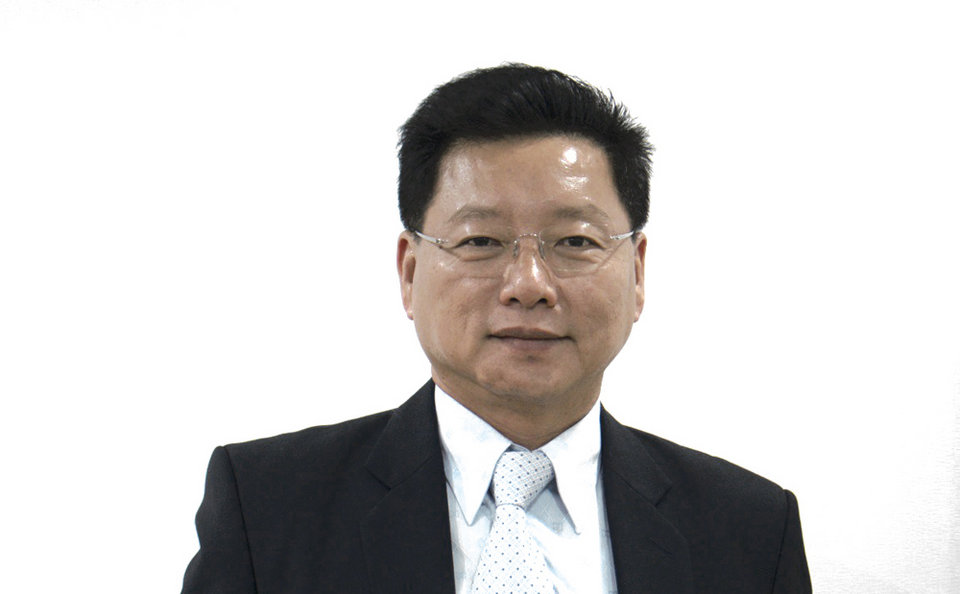
“Last Mile is the concept that we are currently developing to help get people to their final destination after being dropped off from the main transport network such as the BTS or bus. This is the idea behind the Pun Pun rental bicycle stations. We have already implemented nine stations and are hoping that a total of 50 such stations will be available in the inner city area this year. That means a total of 500 bicycles available for commuters to use.”
Pros: Bicycles are clearly the most energy efficient and environmentally friendly solution to get from A to B. Making more bikes available is definitely a good thing as it not only persuades more people to get back in the saddle but also hopefully means other road users get more bicycle savvy.
Cons: A good idea in practice, the reality of the Pun Pun system is less attractive. For starters, most of the current stations are in central downtown, locations that are already pretty easy to get to by existing public transport. While bikes are a great way to get from the main transport hubs deeper into the sois, the lack of sub stations in these sois mean you might end up paying for a bicycle to sit doing nothing outside your final destination. Also, while cheap, the B320 initial fee for membership might just put off many people from giving the service a try.

Advertisement
Let’s face it. Singapore isn’t known for trendsetting—we’re more we-like-it-if-you-like-it kind of folk. But we do pride ourselves on being green. And in shape. We don’t like falling behind in world rankings. And we certainly don’t have a problem throwing money and manpower at something if we think it’ll add to the country’s appeal. So the fact that cycling here is largely relegated to weekend warriors and hipster kids on their fixies is truly baffling. There’s no shortage of cyclists (the upcoming fifth edition of OCBC Cycle Singapore is expecting some 12,000 participants), but a real dearth of day-to-day cycling; the kind that makes you think, “You know what? I’m going to start biking to work, too!”
Over the past decade, cities like Copenhagen, Portland and even London (which not too long ago pretty much viewed bicycles as a public nuisance) have embraced urban cycling—and in particular cycling to work—as the kind of eco-friendly, health-promoting, good-news-all-round initiative worth promoting as much as possible. And, in so doing, those cities have been transformed. To visit them now is to accept cycling as part of the essential infrastructure of any great city—there are bikes everywhere and (seemingly) everybody bikes. Yet, here in Singapore, cycling remains resolutely a recreational activity. The city features on precisely none of the world’s best cycling cities lists, despite being far less congested than London, flatter than Amsterdam, smaller and easier to navigate than Paris, and with lower petty theft rates than pretty much anywhere on the planet. Most people here look at you in bafflement when you suggest cycling to work; yet they’ll happily chew your ear off complaining about MRT breakdowns, unavailable taxis and extortionate COE rates. Why is that? Inertia, laziness—or something more fundamental? And what can be done to turn all this around?
In our view, there’s an opportunity here for Singapore to lead the region in promoting a truly green transport solution and building a happier, healthier city; but it’ll require a concerted push, and a change in attitude from both the government and you, the people.
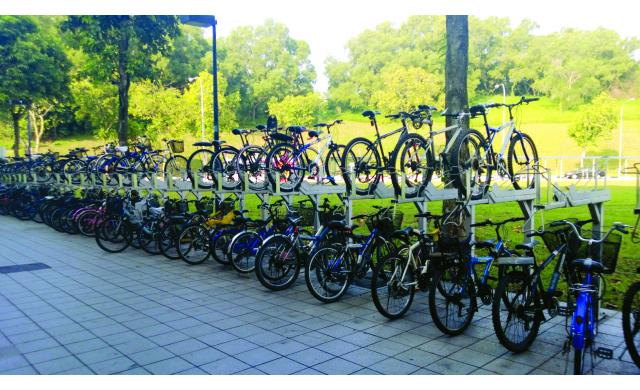
It’s true that there are some (sort of) encouraging signs. There’s already a fairly extensive network of cycling paths on the island; with more to come. By 2014, seven outlying towns will be equipped with 50km of intra-town cycling path networks that will connect riders to key public transport hubs like MRT stations and bus interchanges, amenities like markets and schools, as well as the existing Park Connector Network (the Ministry of National Development also promises that network will increase from 200km to 360km by 2020). The trouble is that, to make cycling to work viable, it needs to be visible. Which means it needs to be downtown, too—what popular local blogger and cycling advocate Mr. Brown describes as “a Park Connector Network that actually takes us somewhere we need to go.” Contrast that with London, where tourists can ride on dedicated bike lanes close to central landmarks like Oxford Street, Hyde Park and Leicester Square. So it’s encouraging to hear that the Land Transport Authority (LTA) is working with the Urban Redevelopment Authority (URA) and National Parks Board (NPB) to implement a network of cycling paths in Marina Bay, also expected to launch next year.
Further efforts have come from the LTA over the past year, with over 4,000 new cycle parking spaces added to 10 MRT stations like Admiralty, Chinese Garden, Simei and Yishun, with even more to come. The Housing Development Board (HDB) is also on the case. They’ve already installed a two-tiered cycle parking system at Singapore’s first eco-friendly HDB estate Treelodge@Punggol and are planning to do the same for Yuhua.
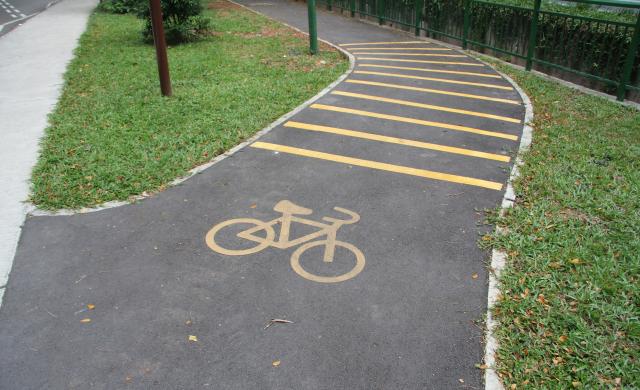
Bike paths and bike security are only part of the story, though. Two issues come up time and again when you ask people why they don’t cycle here: careless car drivers and the sticky, sweaty heat. But are we really willing to give up that easily? (Don’t answer that.) Until more people are seen biking to work, those in charge are unlikely to see that steps need to be taken to encourage even more to do it.
The weather itself isn’t going to change any time soon, global warming or not. And whereas cyclists in Amsterdam, New York and elsewhere regularly contend with rain and snow on their commute, on a good day they can at least go straight to their desks when they get into work. Here you’re pretty much guaranteed to need a shower by the time you arrive. Given how few office spaces here offer shower facilities, it’s surely that we should be lobbying for, rather than bemoaning our equatorial misfortune.
Infrastructure of a different sort is going to be crucial, too. Other cities that have successfully reinvented themselves as cycling centers have made bicycles themselves much more widely available—and affordable. Public bike sharing schemes have proven hugely popular elsewhere—Hangzhou (the world-leader) boasts more than 61,000 bicycles available from more than 2,000 stations, while Paris, often seen as the progenitor of the scheme in Europe (despite only launching in 2007 and with a similar scheme having been trialed in La Rochelle as early as the 1970s), has made some 20,000 two-wheelers available.
These bikes might not be (scratch that, never are) all that hot in the looks department, but the system works: there’s almost always a bike available nearby, you don’t have to be an expert to ride them, and the rental system is straightforward. In London, for example, you pay £2 for a day’s access to the scheme (or up to £90 for a year), then a fee depending on how long you’re actually out on the bike. The first half-hour is free, an hour is £1. Anyone over 14 years old can rent one of the bikes, fondly (and only sometimes disparagingly) referred to as Boris Bikes, after Boris Johnson, the mayor in charge when the scheme was launched. And the scheme has been so successful that, on a single day during the Olympics, close to 50,000 (!) rentals were made. (It’s sponsored by Barclays Bank. DBS, we’re just sayin’…) These schemes are also a boon for the tech-minded. Cities like Washington D.C have seen subcultures spring up to take advantage of all the data generated by bike sharing programs, to build smartphone apps, map efficient routes and identify gaps in the infrastructure. It’s the kind of big, civic-minded data project you’d figure/hope young Singaporeans would love to tackle.
But if it’s hard enough convincing Singaporeans who’ve been brought up to believe they need to own a car to show the world they’ve made it that a bicycle can also be a worthwhile investment (good luck adding a sixth C, for cycle, to the Five Cs), having them share a saddle with other users is yet another hurdle. Bike sharing, though, is only one way to go about it. Another success story out of the UK is the Cycle to Work Scheme, a government-assisted program whereby employers (who are encouraged to sign up in order to boost their CSR cred) can purchase bikes (and bike accessories) tax-free, and loan them to employees for a monthly fee so long as they’re riding at least part-way to work.
So, if there were some government will behind this, the models already exist for how to make it work. Rather more challenging is the change in mentality that would be required of other road users. (Though it’s worth saying that until you’ve been a cycling city as long as somewhere like Amsterdam, road safety remains a real problem, even for the likes of London.) Absent dedicated bike lanes, there’s no getting around the fact that cyclists are treated as second-class road users. Motorists in Singapore rarely practice basic road courtesy and safety when encountering cyclists (though accidents involving cyclists here did at least fall 17% from 2008 to 2011) and according to Mr. Brown and founder of amateur cycle racing club Joyriders Joyce Leong, this can be attributed to a lack of education. “The exposure to cycling from young is next to zero. Kids here are so precious; they’re used to being chauffeured around. When they grow up, they will have no idea what it’s like for cyclists and won’t know how to react to them,” Leong explains.
“People are clearly interested in bike-sharing facilities, but cyclist safety is a big concern,” says Francis Chu, co-founder of local group Lovecycling.net and director of Isuda Bike Share, which launched its pilot project at one-north last year. “We had many users sign up, but they gave up after a week or two because they didn’t feel safe sharing the roads with cars and trucks.”
“This scheme whereby cyclists share footpaths is pretty good, but it’s not promoting the safe usage of the roads, which is where cyclists should be, not on the footpaths harassing pedestrians,” says Alan Grant, a writer and editor who himself rides to meetings all over the city. “What we need are bike lanes on the roads and things like colored boxes at traffic lights and junctions that cars can’t enter. There should also be traffic lights allowing cyclists to move off seconds ahead of motorists.”
Both Grant and Chu agree that while the authorities are becoming more aware of the need to help, they’re not moving fast enough. Chu is still awaiting a response to the Lane Width proposal he submitted last year and in a parliamentary debate earlier this month, Secretary for Transport Muhammad Faishal Ibrahim continued to cite problems with, and not solutions for, on-road cycling. It seems the government is unlikely to change its stand, which Dr. Faishal put in stark terms in last September's debate: “In Singapore, land is a scarce commodity and, I dare say, road space is even scarcer… Most of our roads today are optimally sized for traffic conditions… Given our circumstances, we have therefore prioritized off-road cycling, which is safer and can cater to greater numbers of people… the Government is unable to accommodate all the wishes of all small communities, but must think of larger, overall needs.” (See the full response on the MoT website)
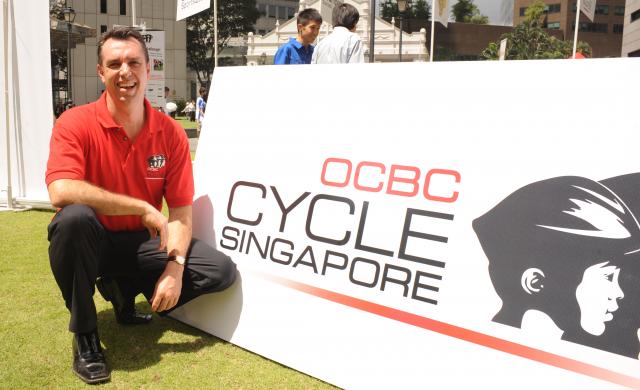
Chris Robb, MD of Spectrum Worldwide, who are the massive OCBC Cycle event organizers and recently carried out the Safe Cycling Campaign for the third year running, urges cooperation not confrontation. He points out that “Cycling has absolutely exploded in Singapore over the past five years.” But, he says, "we need to recognize that we’re in a tight space here in Singapore and work with what we have.”
Now, not 10 years from now, is when we should demand that this start to happen (it’s taken at least that long for it to take root in all the cities mentioned in this story). There are enough shoots to feel vaguely optimistic, but it’s still odd that there aren’t more and louder voices agitating for action. This really isn’t an issue that should get stalled by debate, disinterest or indecision. God forbid there be lengthy feasibility studies and limited roll-outs. (Mr. Brown again: “How long till we get there depends on the political will of our government. As it is, we're not very far off.”) Spend any time in cities like Portland or Paris and the question is not, “Why are they all cycling here?” but “Why the hell isn’t everywhere else?” Do we really want to be the last ones to the party?
Advertisement
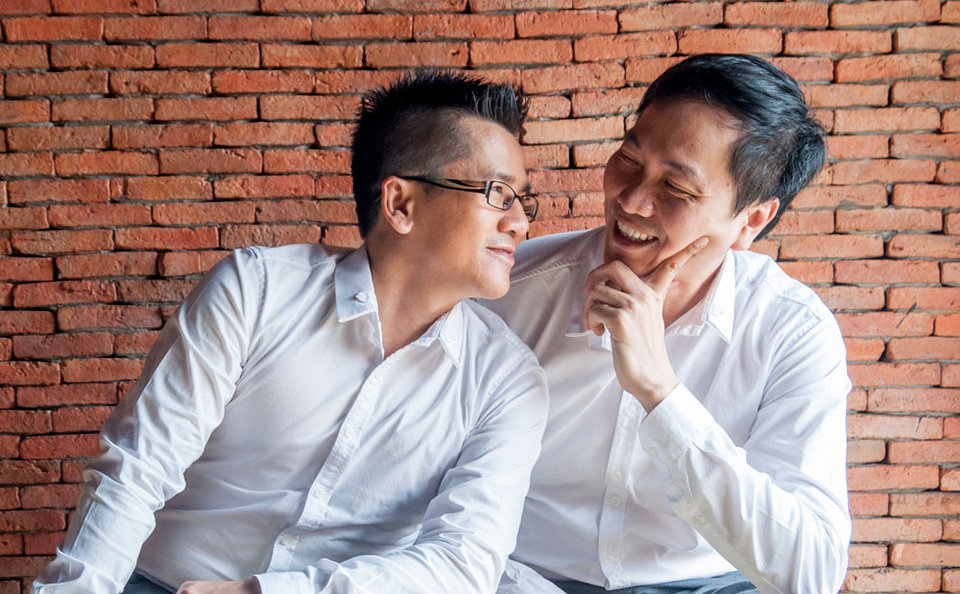
Poopae and Yod met at a gay pub. Poopae developed a crush on Yod because of his tall figure. And after chatting a while, Yod fell in love with Poopae, in part because of his back-story.
“He’s had so many tough experiences, while I’ve had no disruptions, really. My family has accepted me since I told them that I was gay, when I was 28. I have good friends and a good career, while Poopae has had to fight to have everything that he wants,” Yod says about his partner of five years. “He has an endless lust for life.”
After two years of dating, Poopae and Yod decided to move in together. They go out for dates in malls and have no qualms about showing their affection, like many straight couples.
“We always hold hands when we go on dates. Some people still feel a bit awkward to see this, but we don’t care. It’s just natural. If more gay couples did it, eventually people would just get used to it,” Poopae says.
Despite gay rights activists pushing for the legalization of same-sex marriage, Yod admits equality could still be some way off, with many conservative groups, and even sectors of the gay community, against the idea.
“Some gay groups are afraid that it will stir up the issue, and turn public opinion against us. But for me, it’s clear that if we don’t start now we’ll never have the rights that we should have. Members of the LGBT community are like second-class citizens. While it seems that we can do anything, actually there are many things we can’t do,” Yod says, who is part of a team pushing strongly for Thailand’s first same-sex marriage law under an alliance called Sexual Diversity Group.
“The way things stand, I’m totally against weddings between men and women. It’s unfair. Why should we go celebrate something that we, as gays, can’t have? I don’t go to weddings nowadays unless I’m extremely close to the couple. I often question if it was a gay couple getting married, whether half the people would come to congratulate them,” Yod continues.
Demonstrating how necessary the law is, Poopae says he has already encountered hardships that could have easily been avoided.
“My ex-partner had an accident back in my hometown of Nakhon Phanom. He was in a critical condition, but the hospital had to wait a whole day for his family to come from Sukhothai to sign a piece of paper allowing them to operate. Unfortunately, they couldn’t save his life,” Poopae recounts.
What’s more, the police wouldn’t allow Poopae to take his partner’s body from the hospital because he was not legally his relative.
“It was really sad and frustrating. I had to find seven people to sign a paper to be my witnesses. I had to ask the head of the village and my relatives to sign the paper. Finally, I got his body out. It took me a whole day. I was really lucky that my partner had already told his family that he was leaving all his assets to me and that they complied with his wishes.”
While this sad case ended without a feud, Poopae says others are not so lucky. As they don’t have ambitions to start a family by having kids, Yod and Poopae hope to focus their attentions on helping advance the gay cause in society.
“We have to look to the future. We want to help gays who get lost in all this conflict. Many of them flee from unsupportive families to lead a wild life in the city. Many get HIV and die. It’s a modern-day tragedy. I want to educate and help them to achieve a better life and to stand up for their rights. Everyone has a reason to exist. If you find those reasons, your life will be meaningful. We’ve already found ours,” Yod concludes.

When Nam and Fias announced their wedding, there were friends who congratulated them and others who cast doubt on the seriousness of their decision. But Nam insists her marriage, though not legally recognized, couldn’t be more important to her.
“I knew she was the one right from when we first started dating. I bought a ring and kept it for a long time waiting for the right time to pop the question,” Nam recalls.
In the end, Nam decided to make it official—not to Fias’ face—but on her Facebook timeline, on the date 12-12-12. Fias replied with a simple comment that read “YES.”
“Every woman dreams of wearing a wedding gown, and I wanted her to have that moment, too,” Nam says.
The couple eventually celebrated their wedding on January 19, with lots of friends and family in attendance, all of whom fully support the unofficial union.
Newlyweds Nam and Fias insist that they need a law that gives their life some foundation, especially as they hope to one day adopt a child to fulfill their familial instincts.
“I want a marriage license so we can be confident in starting a family together,” Nam says.
“Gender shouldn’t be a barrier for humans. We are free to express our love to anyone,” Fias adds.
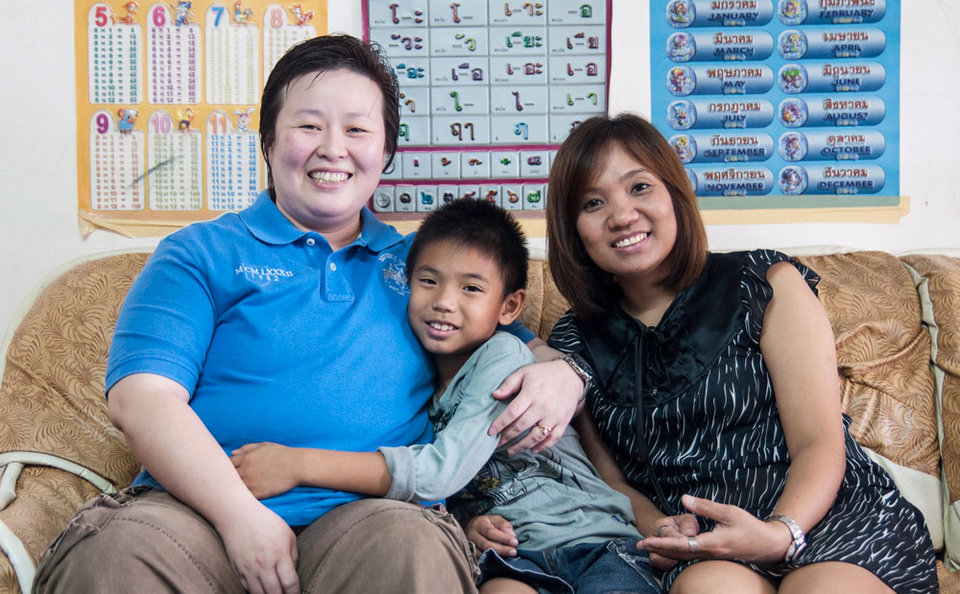
While for some a big wedding ceremony is important, for other couples like Nong and Ple, who have been together five years, all that matters is getting a marriage license to secure their status.
“I didn’t want a big ceremony because my family, who are quite conservative Chinese, would not be all that happy about showing everyone that their daughter is getting married to a woman. I also don’t like the idea of spending lots of money on a lavish party. We’ve been through tough experiences together, so we don’t need to do anything to prove our commitment,” says Ple.
The couple’s courtship started in late 2007 when Nong began chatting with Ple, a host in a Camfrog chat room on the topic of dharma.
Nong is a mother of three children, and lived with an abusive husband for 14 years. “I never liked men. All my ex-boyfriends were girls who are tomboys. I accidentally had sex with my ex-husband and he said he would take care of me so I said yes. He is still the only guy I’ve slept with.”
But things went horribly wrong. Nong’s husband kept getting other girls pregnant and would hit her when he was drunk. When she’d eventually had enough, she turned to Ple for help.
It wasn’t a reckless decision. Nong wasn’t willing to leave her two-year-old son, Que, with her husband, which meant they had to find a place to settle and raise the boy.
For her part, Ple says she moved out from her family to save them from trouble. “Nong’s ex-husband had connections because he knew cops. He hunted us for months until one day he attacked his own daughter in order to force Nong to come back and, in the end, she did.” Ple recalls.
“He tried to hit and drag me into the house but I refused,” Nong says.
“We kept fighting until people called the police. We were taken to the police station where they asked us how we wanted to deal with our relationship. I announced there and then that I was done with him and wanted to start my new life. That finally made him leave us alone.”
Today they are the picture of a happy family. Que, who is now 6, calls Ple papa and openly tells his friends that his father is a woman. “Some of my friends ask me why my dad is a woman. I just say because he is my dad,” he says.
Despite this close bond, Ple is fearful that, without any law to guarantee their family status, should something happen to Nong, the boy will be sent back to live with dad.
“That is the last thing I want to happen,” Ple says.
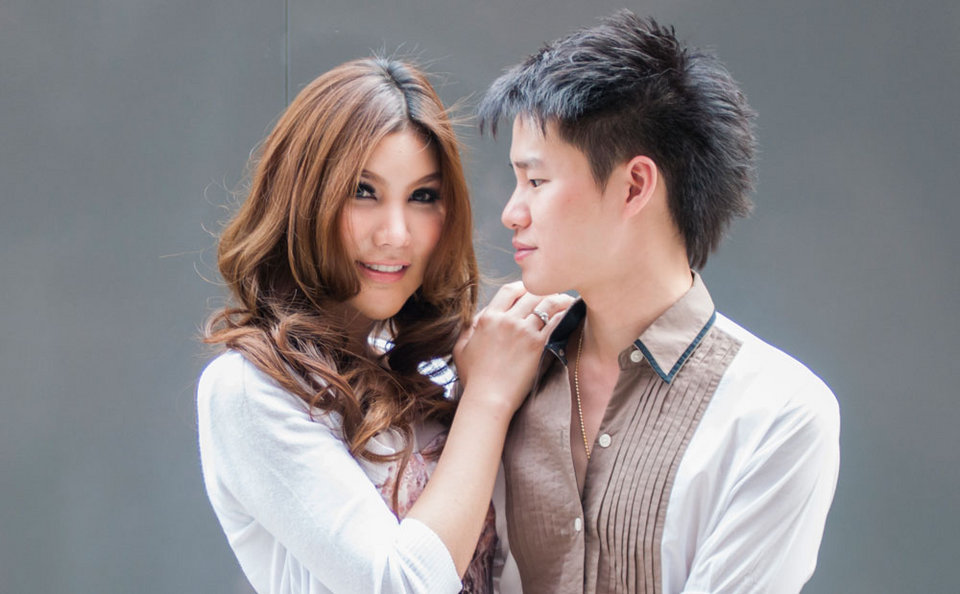
For many, the start of the university year is a time for great optimism, but Pat and Grace never would have expected that they’d also find lasting love.
Both had been delayed in starting English classes, so they had no choice but to stick together to catch up on their homework. After just one week, Pat had developed a big crush on Grace, who he thought was beautiful.
“She's so gorgeous,” Pat says. “I started borrowing things from her just to have an excuse to chat more.”
When Grace, who had just finished competing in the Miss Tiffany 2008 pageant, noticed that Pat wanted to be more than just a friend, she had no reluctance in telling him the truth about being transgender.
“My standpoint is that I should be honest to anyone who is my friend. It’s not something that needs to be kept secret,” Grace says.
But the news took Pat by surprise and he thought that Grace was only joking.
“I was shocked. She is so beautiful; I thought, how could she be a man? Honestly, to this day, I still can’t quite believe that she is transgender. She is all woman to me,” Pat says.
Grace’s openness about her gender is helped by her family who has accepted her from a young age.
“My mom accepted me right away but my dad stopped talking to me for a while. I asked him frankly, would he prefer a daughter who is a drug addict or who falls pregnant before graduating, or a transgender who just wants to be a great daughter and to take care of her family for the rest of her life,” Grace recalls the conversation that finally won her dad’s acceptance.
“He just asked me to follow his will in helping the family business and to study hard for a master’s degree. I have achieved both these things.”
While Pat quickly came to terms with the truth about his girlfriend, he still had to face the nerve-wracking challenge of convincing his Chinese-descendant family to accept the woman he loved. Before too long, he introduced Grace to his parents.
“I introduced her to my family just a month after we became a couple. My parents were stunned when I told them the truth. My mom had the hardest time coping with this,” Pat says, adding that he was lucky that his parents gave Grace the chance to prove herself.
“I didn’t do anything to win them over. I just let Grace work her charms. Now my mom totally loves her.”
When these obstacles overcome, Pat was ready to take the relationship to another level—marriage. Even though they had only just graduated, he would continually raise the topic to Grace while on trips to Europe and US, but she wouldn’t commit.
“I thought he was just joking,” says Grace, who finally said yes to him in a place that no one would consider romantic, a garage. “This time he even came with a ring.”
Their wedding, a grand celebration at a high-end hotel, took place on Dec 16 last year attended by nearly a thousand guests. But when talks turn to the debate over the same-sex marriage law, Grace says it isn't something that she really wants.
“I want to marry as a woman, not a man. If the same-sex marriage law happens, that’s great, but I want my title to be either Mrs or Miss because my heart and my body is a woman’s. I want to make it clear that, as a transgender, I don’t want the title to be able to trick a man as people often argue—it’s just really important in order for us to lead a normal life. It’s really frustrating filling in documents and traveling. Whenever I travel abroad people look at me like I’m a criminal because my documents give me a title that contradicts my looks.”
Although her dream of being legally recognized as a woman would appear some way off fruition, Grace at least finds solace in having found the love of her life, at just 24, the same age as Pat.
For his part, Pat has no regrets. “When you’ve found the right one, why wait? She is the right one for me. I love everything about her, from head to toe, even her nails!”
Advertisement
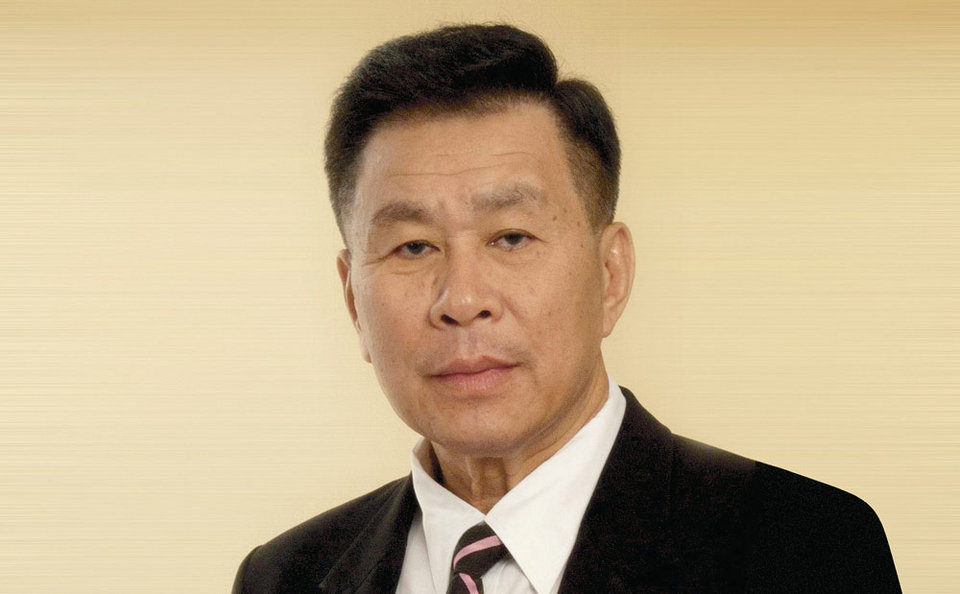
One-time commissioner of the Royal Thai Police, Sereepisut is widely known for not shying away from a tough fight. He battled communists in Nakhon Panom during the 1970s, forced Chonburi’s notorious crime boss into exile, and busted Newin’s Bhumjaithai Party for vote-buying. After being removed from office by Samak Sundaravej, during the pro-Thaksin politician’s premiership, Sereepisut returns to the political arena as a candidate. As an ex-top-cop, Sereepisut claims voting for him will put the entire police force as governor of Bangkok and that he’ll crack down on crime syndicates and corruption.

Bangkok’s last governor, a democrat, was elected in January 2009 and just resigned on January 9, 2013. He was preceded by another democrat, Apirak Kosayothin, who was forced to resign amid allegations of corruption surrounding the purchase of fire trucks (a contract initiated by the previous governor, Samak Sundaravej). Even in the democrat camp, there’s little praise for Sukhumbhand’s first term. But “Khunchai” is now brimming with ideas: a skywalk at Wongwianyai station to Saphan Taksin, reduced BTS fees on the new line extensions (On Nut to Bearing and Saphan Taksin to Bangwa), cheap housing for BMA officers, yet more CCTVs, etc.

Ex-actor turned independant politician, army captain Mettha Temchamnarn ran in the general election in 1983, the governor election in 2004 and again in 2008. Mettha claims Bangkokians need to elect an independent candidate who can work with the current PM, and says his focus will be on the poor. He wants to surround Bangkok with rice fields where people can harvest and sell their rice to the government. He’d also like to build proper housing along the canals and make Thonburi a separate province.
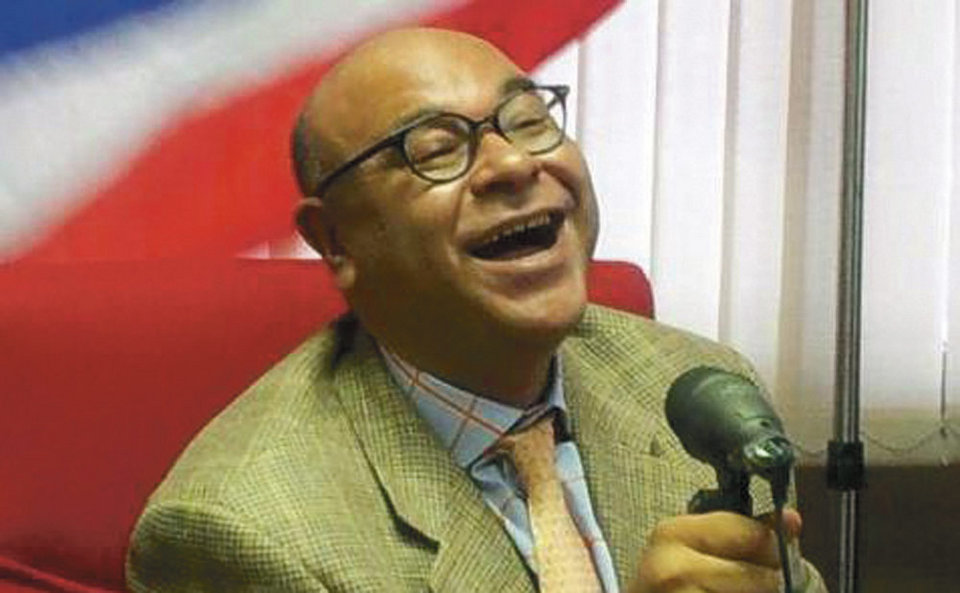
Better known as DJ Suharit, he was one of the first candidates to confirm his running through his Twitter account. This electronic DJ and wacky fashion icon (think Lady Gaga, only way before Lady Gaga) was formerly the managing director of his family’s stationery and office equipment business, DHA Siamwalla Ltd. As a musician and fashion enthusiast, Suharit’s campaign focuses on serious matters as well as creative ones. His policies include changing the education system in Bangkok’s schools which he believes needs to abolish exams and focus on the learning curve of each child. Then there’s his 50 districts policy to make every district in Bangkok special, building more family venues like sports and art centers.

He graduated top of his class at the Police Cadet Academy and was also the first of his graduation to make it to major-general, at the age of 40. He was only recently announced as Pheu Thai’s candidate after a long wait where Sudarat Keyuraphan was rumored to get the party’s nod. (In the last election, Sudarat got 500,000 votes while Sukhumbhand got 1 million). Pongsapat has yet to formally outline his plan for the city but has been bragging about his track record on the Narcotics Control Board, meaning security will probably be at the core of his campaign.Who will
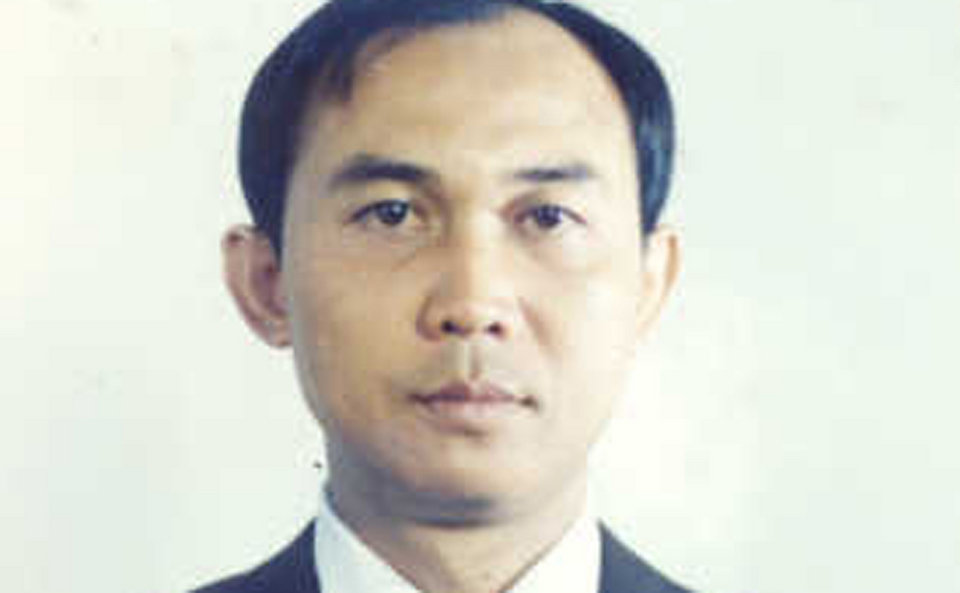
He ran for Bangkok’s governor election for the first time back in 1990. But Waranchai used to work as a civil servant back in 1976 before quitting his job in 1986 to run for senator, which was the stepping stone to his involvement in Bangkok’s politics. Having worked in the BMA, Waranchai has been in many political parties like Thai Rak Thai and the Democrats. Waranchai is now running this year as an independent candidate. Waranchai’s policy focuses on the implementation and development of public transportation to help decrease the traffic. Other policies include reducing the city’s garbage and pollution as well as cleaning out stalls.

He is a former CEO of Media of Medias company and Spring News channel. Besides being involved in the media industry, he was an advisor to many ministers. He is running as an independent candidate because, he claims, party candidates can not fix the problems and political issues we face, as they are the source of these problems. Under the concept “24-hour Bangkok,” Kosit would launch four policies to deal with our problems instantly: reducing traffic by putting more road signs, developing the education system (especially raising the standard of provincial schools), preparing for AEC culturally and economically, and providing 24-hour services for safety.
Advertisement
28, TV host, musician and writer

“I haven’t reached a final decision as we’re not into the election season yet. Some policies from other candidates have not yet been revealed. I’m interested in Suharit Siamwala joining the election. Normally, only people who work in serious professions jump to the election, but he’s totally from another side. I think that if there’s no other candidate that is more interesting, I will go for Suharit. But my experience working with the governor’s team is that the position itself is not all about making changes. It’s more like serving Bangkokians. I think the governor can’t effect significant changes because we’re just one city. Don’t forget there are another 76 provinces in Thailand.”
27, executive director of www.SpokeDark.tv

“This time around it’s quite hard to decide, I admit. Most of Bangkok survived the flood in 2011 under Sukhumbhand Paribatra, but, on the other hand, the futsal stadium thing was very embarrassing. In general, progress seems to be slow. If Sukhumbhand gets another term, will we see things move along faster? I like the way Suharit is trying to educate and inform people about the governor’s duties and the city’s budget. Usually we don’t hear candidates talking about this. Some of his ideas I find quite unrealistic, though. We’ll have to see how far he can take them. And then there are other candidates who haven’t announced their campaign officially yet, so maybe it’s not the time to decide. Let’s hear the candidates talk more concretely about improving Bangkok’s schools, taking more interest in public health, managing traffic more efficiently, and reducing pollution.”
39, Big Trees Project founder, architect at Be Our Friend Studio

“I’m not sure who to vote for but I’ll definitely go to vote. Voting for a governor is important. Consider if Bangkok wants to become a mega city, like London, Singapore, Shanghai, Rio de Janeiro, New York, they are all like a country in a country. We need a governor that has global vision with local insights, moving towards the future with sustainability in mind. What we don’t have is the right person, someone who can see the potential of the city, with the appetite to push it forward with world-class education, sustainable development, better IT, green living and happiness. Bangkok is among the least green cities in the world with only three square meters per person.”
53, business owner, candidate for Bangkok governor in 2008

“I’m not going to vote for anyone; there isn’t one candidate that I feel deserves my vote. I’m not sleeping on my right to vote, I’m just choosing not to vote since there isn’t any good and honest candidate. The governor is supposed to fix problems, help with the cleanliness of the city, help prevent disasters like flooding, but in my opinion all these candidates are either dishonest or corrupt. Look at the problems we had years ago, the dirtiness of some of the canals… Despite what people say about cleaning up the city, our canals still stink. If there are only cheaters and false promises, nothing is going to change and get better in the long run, so why should I vote for any of them?”
39, Editor of Happening magazine

“I haven’t made up my mind yet, but I feel more interested in candidates that are not backed by political parties. I think some of the major problems in Bangkok stem from these political parties being too divided, like when the flood happened, stirring up squabbling between the government and the BMA. I think a governor who isn’t supported by political parties would help keep our city together, but, of course, that person has to be bold and brave enough to make tough decisions, which would be easier for a governor who doesn’t have to worry too much about politics.”
33, singer
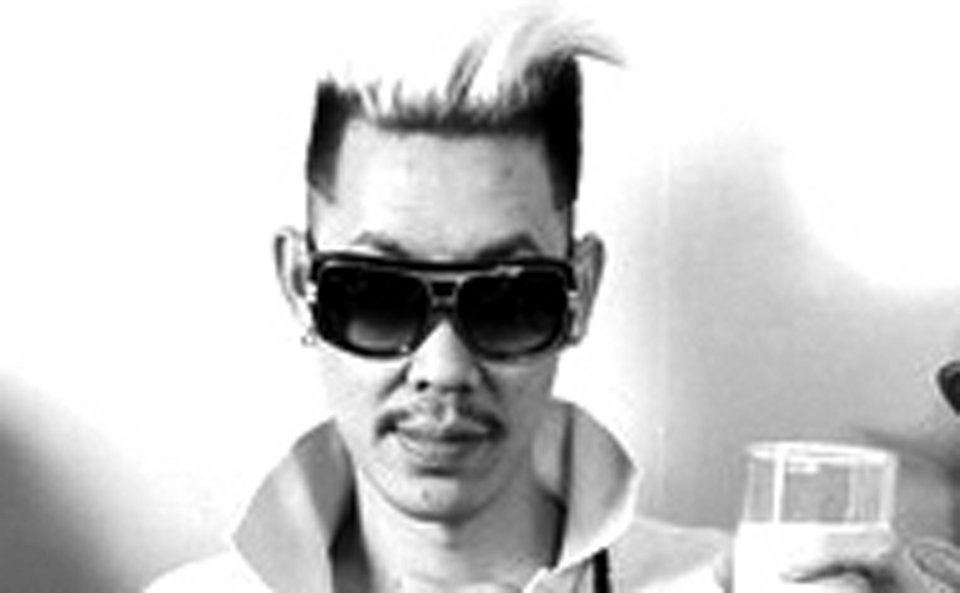
“I haven’t decided who I’m going to vote for yet, but I definitely think voting for a new governor is really important. Personally, to get my vote, that person has to be honest above everything else. Honesty comes first. Even though you can’t tell if they’re really honest, (you can tell a lot about someone through their background and policies). Second would be the ability to develop something new for the good of the country.”
29, chef at Escapade on Phra Athit

“I’m voting for Suharit. I love his style and the way he thinks. Long ago, I had a chance to learn that in his office there’s a sign saying something like “in this world there are more boxes for you to tear open,” which is true. I love the fact that he has got two personas: one as a DJ with so much energy, another as a man devoted to his work and a loving father. I believe that he’s a family man, kind and a really nice guy. He’s like an ordinary guy who cares about our country, and is definitely against corruption. He dares to do things and make things happen, as you can see from his work as a DJ. People thought that he was joking when he said he was going to run for governor, but obviously he’s really doing it. He won’t spend millions making banners so people vote for him, he’s just a simple guy. I believe his policies and ideas will help make our lives better; he’ll implement things that will blow us away.
23, actress/post-graduate student

“I don’t know who I’m voting for yet, but I do know Bangkok is suffering from increased cars, more traffic and countless other problems. The governor must be a leader and an asset to the city. But to get my vote, they’ll need to demonstrate clichéd yet important qualities like being knowledgeable, honest, to stand up against corruption and be willing to work to achieve solutions rather than be all talk. I want someone who can find new approaches to solving problems and who uses the budget efficiently.”
40, architect at VaSLab
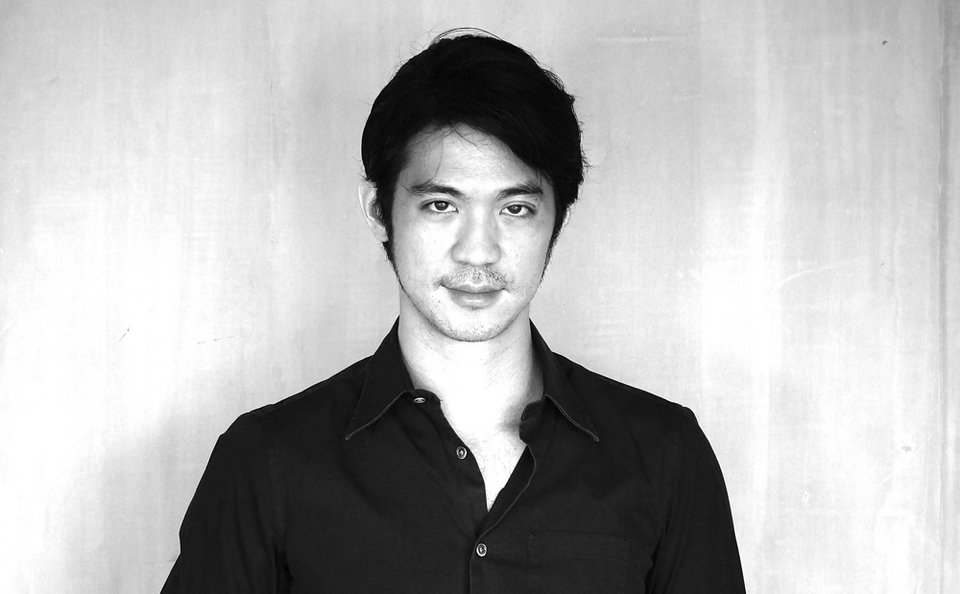
“I still don’t know who I’m going to vote for, but I definitely think it’s important to vote, and as a Thai citizen, I will use my right to vote for sure. I would love to have a governor who envisions art as an important part for the city. To me, art beautifies people’s hearts to have better values and to be less materialistic. I would also like a governor who truly supports projects to enhance the sustainability of our urban environment. For example, a park acts as a node for bringing together the community, creating a healthy lifestyle and social or cultural activities.”
24, Paralympics gold medalist in table tennis
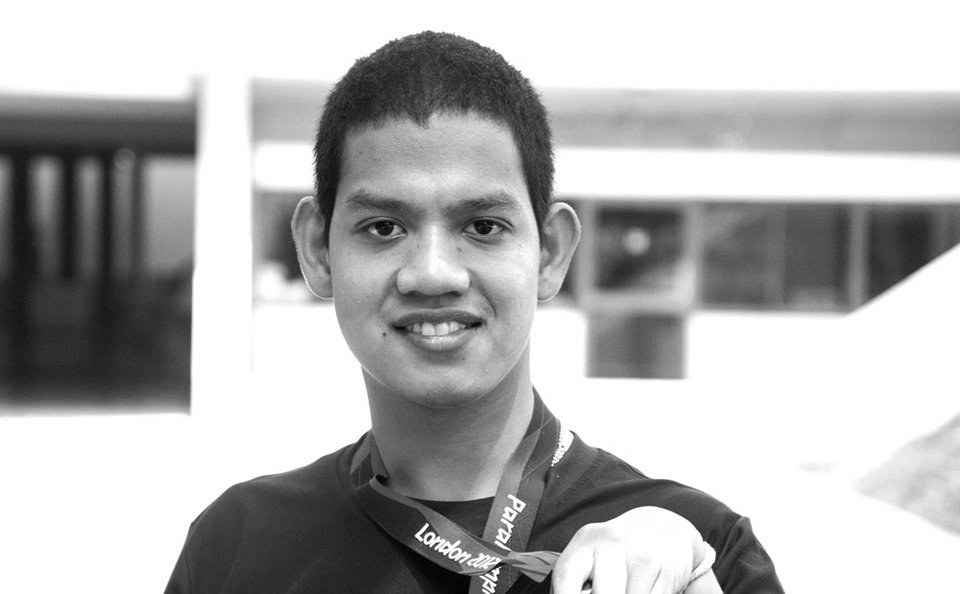
“I’m voting for M.R. Sukumbhand because I’ve seen how he is as Bangkok’s governor and I think he’s capable of bringing change to the capital. If he’s re-elected, I feel that he’ll be able to do things that allow Bangkok to move forward and help fix its problems.”
Advertisement
 Facebook
FacebookBangkok is the world’s No.1 Facebook city with 8 million accounts in a population of 10 million people

Verdict: No doubt about it, Bangkok is the world’s No.1 Facebook city. According to some counts, there are actually more Facebook accounts in Bangkok than registered inhabitants, because of the large population here that is registered back in their hometowns. That means we’re also the city with the highest Facebook penetration.
Facebook users in Thailand, including 3.2 million new users in the last 6 months
Pai Texas (Texas Hold ‘Em Poker) is the top Thai Facebook page with 2.22 million likes
is the peak time for people using Facebook
 Instagram
Instagram
Instagram users worldwide
Instagram users in Thailand

Aum Patchrapa (@aum_patchrapa) is the leading Thai celebrity on Instagram with over 858,000 followers which lands her on the world’s top 100 celebrity ranks at 82—that’s higher than Jason Mraz!
Chermarn “Ploy” Boonyasak (@chermarn) was once the top Thai celebrity on Instagram but is now ranked at No.2 with 698,XXX followers while Araya “Chompoo” A. Hargate (@chomismaterialgirl) is No.3 with over 621,000 followers
RS’s Kamikaze record label (@kamikaze_music) is the top brand on Instagram.
Verdict: Bangkok is king when it comes to most commonly tagged Instagram locations, our nearest rival being the photo-sharing app’s birthplace, California. And with many calling 2012 the year of Instagram, it’s with some pride we’re going to declare Bangkok #1 Instagram city in the world.
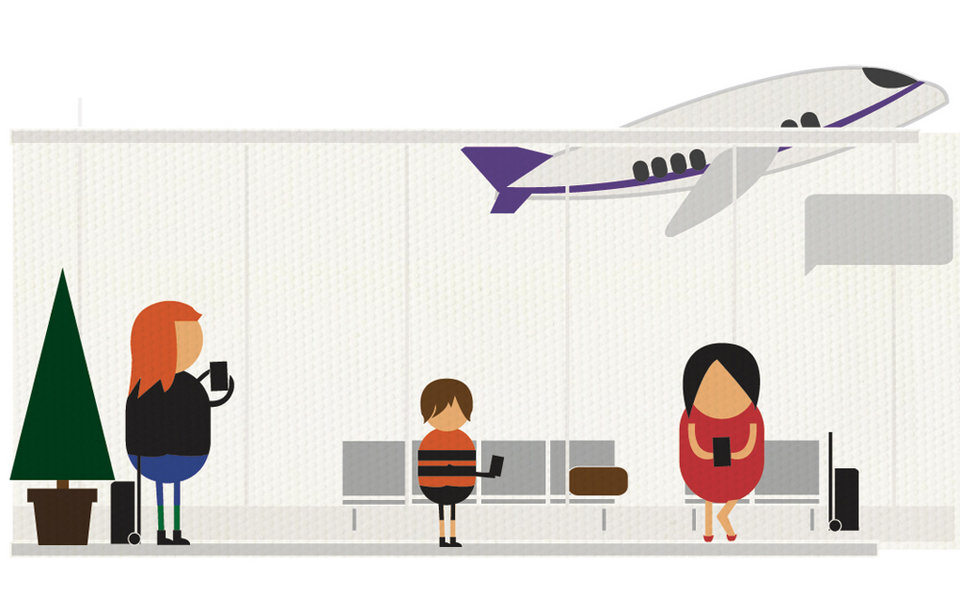
Suvarnabhumi International Airport ranked No.1 and Siam Paragon No.2 in the most popular places where Instagram photos were taken in 2012, beating out Disneyland in the United States. Both also figured in the top 15 for 2011.
 Twitter
Twitter
Verdict: Thais don’t like to read much and Bangkok remains a small player in the global Twitter-sphere. We’re not even in the Top 20, in fact. Interestingly, we stole the Facebook crown from the current top Twitter town, Jakarta, so there’s hope yet.
1.) Jakarta
2.) Tokyo
3.) London
4.) Sao Paulo
5.) New York
Twitter accounts in Thailand
was the world’s No. 3 top topic on Coronation Day on May 5, 2012, as tributes to His Majesty King Bhumibol Adulyadej flooded in. The hashtag was No.1 on December 5, 2009.
(@Khunnie0624) is the top Thai celebrity on Twitter with 1.54 million followers

mobile penetration in Thailand
mobile subscribers in Thailand, out of a population of 69 million people
year-on-year growth rate of LINE users in Thailand
Thailand is No.1 in the world for active Line users with a total 10 million users
1.) Argentina (9.8 hours)
2.) Brazil (9.7 hours)
3.) Russia (9.6 hours)
4.) Thailand (8.7 hours)
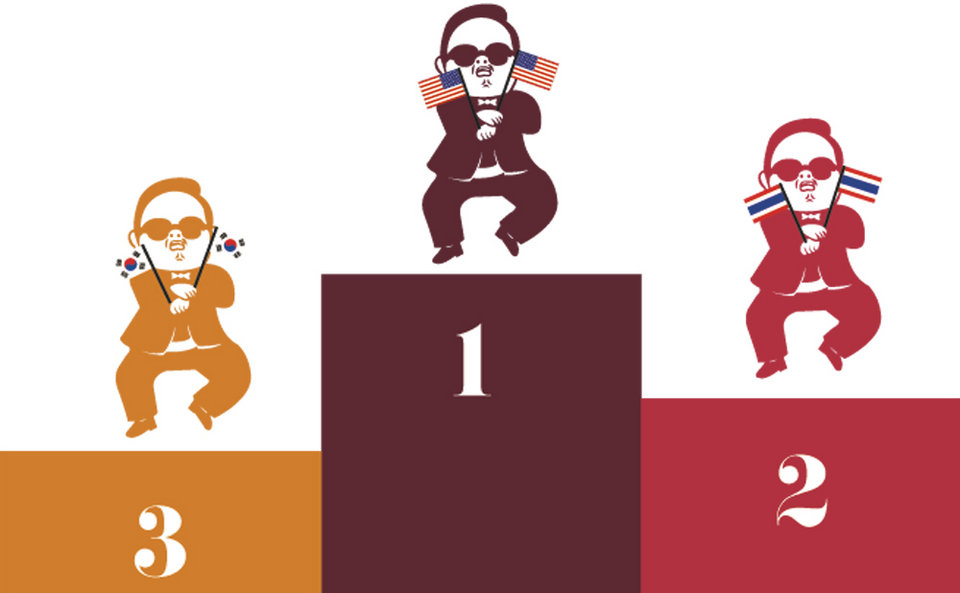
1.) USA
2.) Thailand
3.) South Korea
Verdict: Different regions use different social media networks, such as China’s Weibo and Renren or South Korea’s KakaoTalk, the messenger app of choice on 88% of the iPhones there. That makes comparisons across nations difficult. And there’s even less data on individual cities. But even if we’re not quite sure which city is Social Media Capital of the World, we’re confident Bangkok is in the top 5. And when’s the last time our city was in the top 5 for anything?
Sources: Zocialrank.com, Socialbaker.com, web.stagram.com, truehits.net, We Are Social Singapore, Thaitrend, YouTube
Advertisement

 What is the current state of Thai futsal?
What is the current state of Thai futsal?
It should be more popular than it is. Futsal is street football, anyone can play, and we have many talented newcomers, but we lack support from both the government and sponsors. Unfortunately, this year the Thailand Futsal League kicked off six months late [in September] despite the fact that we’re hosting the FIFA Futsal World Cup. This is a huge setback for our preparations. Our national team is ranked 11th in the world and 2nd in Asia, but our league hasn’t adequately prepared our players for the World Cup. That’s a real shame.
What’s causing these problems?
The Football Association of Thailand doesn’t take futsal seriously. They never outline yearly plans for futsal, for the league or international competitions, and that’s finally taking its toll. The Thai FA always puts football first. We are so lucky to be host of the World Cup and have the opportunity to see the globe’s best futsal players gathered at the same place. But I’m devastated at the whole stadium debacle.
Is there a solution?
Corruption is at the core of our problems. As long as people are being dishonest and always looking out for their own interests, Thai sports will never be successful. Those who are genuinely willing to develop sport are being pushed out of the inner circle so that people with no idea are left in charge. They are installed by the big executives who surround themselves with their followers.
What’s the future of Thai futsal?
It’s really tough to say, as other countries are getting better. Our futsal team has come this far because our athletes are great. But if we can’t solve our problems and improve our management, I fear that we might start losing to Vietnam or Malaysia, like our football team. They got loads of support and money, and used to be ASEAN champions, but look at them now, they were kicked out in the group stages of the last AFF Championship. How is that progress?

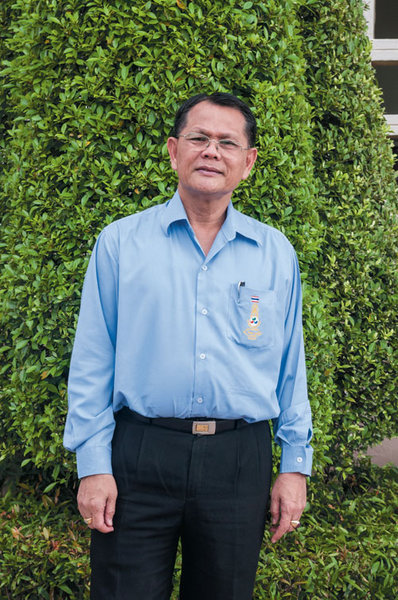 What’s the current state of disabled sports in Thailand?
What’s the current state of disabled sports in Thailand?
It’s really much better than in the past. Before we hosted both the Asian Games and FESPIC Games in 1998, people had no idea what the Paralympic Games was. Some even said that we tortured disabled people by making them play sports. But once we started sending more athletes to the Paralympics, people began recognizing the pride and fantastic spirit of these individuals. This has helped change society’s attitudes towards disabled people; where once parents were often embarrassed about having a disabled child and would keep them at home, now they encourage them to take up sports. Sponsors have jumped on aboard, too.
What are disabled athletes lacking in terms of support?
Lots. First, we need sports facilities built especially with disabled people in mind. Our disabled athletes don’t have suitable places to practice. Existing venues are inconvenient and even dangerous. A blind athlete fell down from the fourth floor of Supachalasai Stadium last year. Thank God he survived. Another pressing concern is budget. Where other sports associations receive funding to develop their athletes within one sport, our two-million-baht budget from the Sports Authority of Thailand has to be dispersed across 18 different categories of sport. We also lack medical officials to classify our athletes according to disability—for this, there are only three qualified doctors in Thailand. More doctors would also help us improve our sports science to get the most out of our athletes. We also need volunteers to help out at sports meets in terms of transport and administration.
What special difficulties do disabled athletes face?
Disabled athletes need a longer time to practice compared to normal athletes. Sometimes they suffer injuries during practice, like pressure sores, which mean they have to stop training. To have a balanced body and state of mind takes lots of time. I want them to have more security in life. And many of our athletes don’t have stable jobs. They’re vendors who sell groceries, coffee or lottery tickets. If they take days off, it means they have no money or have to rely on their spouse or family. They don’t have the chance to work for the government or a company like other athletes, because of their different abilities. Public transport is a problem, too. It’s too expensive having to take a cab to work or training.
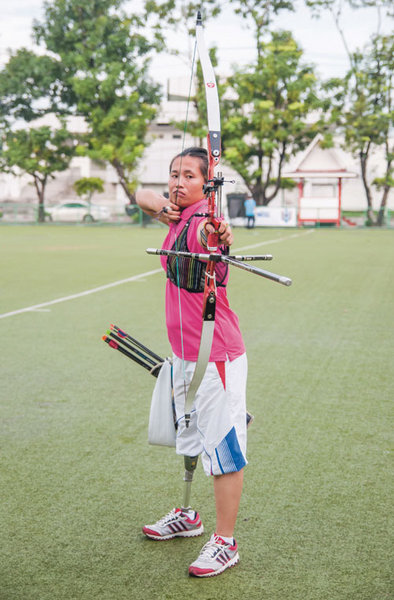 How did you first get into archery?
How did you first get into archery?
I started when I was 14 shortly after I was in an accident that cost me my right leg. I was hit by a truck driven by a drunk driver while I was riding my motorbike. After I recovered, I was determined to push myself, so I decided to take up archery. For one, I like the archer’s pose—it’s really elegant. I got into the national Paralympics team for archery when I was 15 but after falling out with the coach I switched to swimming, for which I won a silver medal at the SEA Games in 1997. After that, I dropped out of sports for nearly 10 years before I decided to make my archery comeback.
How is life as an athlete?
It isn’t that easy. As I want to go to the Olympics, I had no choice but to quit my job so that I could practice and attend competitions to move up the world rankings. I’m not on the payroll like other fully-abled athletes who might have a government position. The daily allowance from the association is barely more than a hundred baht a day. I can’t survive on that. All I can to do is dip into my savings from when I worked as a graphic designer.
What keeps you going?
I have three dreams in life. The first is to graduate with a degree. The second is for my parents to get back together; they’ve been separated for five years now. Thirdly, I want to serve my king and my country on the world stage as a national team athlete.
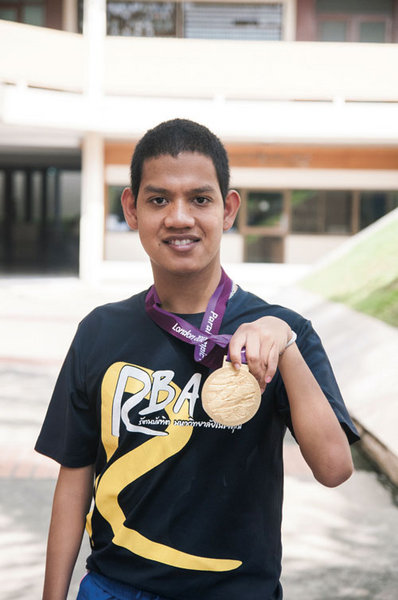 How did you start playing table tennis?
How did you start playing table tennis?
I went along to the police table tennis club that my dad always attended. I saw others playing and wanted to join in. I would go early to practice by myself—I was embarrassed to play with others because of my disability. I didn’t want to slow them down. But when my dad saw me hiding and his friends found out who I was, they asked me to play with them every day. My dad later took me to be trained by the national team coach, and soon I was competing in national competitions and the SEA Games. I qualified for the Olympics in Beijing in 2008 where I was disappointed to miss out on a medal. In the lead-up, I had decided to drop my studies at Kasetsart University to concentrate solely on table tennis. But in the end, I failed. I was totally dejected. I stopped playing for months until I realized that I didn’t want to be remembered as a loser. I didn’t want to be called a cripple like I was in school. So I began to practice again.
How has your life changed after winning gold at the London Paralympics?
It’s true that I tasted success in London, but I want people to know that it didn’t happen overnight. It took me eight years. I put all my life into fighting for gold, and I’m so proud of my achievement. But following the Paralympics, I was left disappointed that so many athletes, sponsors and even association officials didn’t pay their respects to the coaches. Athletes can’t be successful without the sacrifice of a good coach—some even quit their jobs to take care of their athletes, almost like parents. But so many do not get the recognition they deserve and are left jobless at the end of the day.
What’s the future?
Personally, I’m currently studying computer science and plan to continue onto a master’s degree while continuing to represent the national team. I really want more disabled people to play sports. If that means I have to be more active to promote sports with the new generation, then so be it. I’m willing to teach people so that our disabled athletes reach new levels.

 Tell us about your experience coaching Thailand’s team since 2003?
Tell us about your experience coaching Thailand’s team since 2003?
It’s been really tough. Many promises were made before I moved here, but then I found that corruption is everywhere in sports. I was raised in Germany so I’m totally against this and I felt that I had to speak out. Officials at the Amateur Fencing Association of Thailand turned against me. There was no support for athletes. We had no coach and no team manager, so instead of concentrating on competing, we had to do everything ourselves. For one competition I had to manage everything and pay all my expenses up front. On my return, I tried to claim my expenses, about B500,000, but the association refused to reimburse me. To this day, I still haven’t been reimbursed.
What is wrong with our sports administration?
I genuinely believe that the Sports Authority is willing to support all sports, but instead of directly funding our athletes, the money is passed through the associations, which is where the corruption is. If there is no transparency, how can we trust our sports management? The newly elected president and sports associations committee might have the best intentions, but that means nothing if corrupt individuals litter the system and nobody can touch them. Many of these people don’t have the athletes’ best interests at heart and make decisions without consulting them. Another problem is sponsors who fund associations rather than individual athletes; this leads to mismanagement of funds.
What needs to change?
Right now, it takes Olympic success before the general public is interested in a sport. That’s sick! I want to change that mindset. We should look upon our athletes as fine wines who need time to mature. You can’t just throw a one-off lump of money at them and expect success. If we keep doing that, we will forever be the Amateur Fencing Association and never reach professional levels.
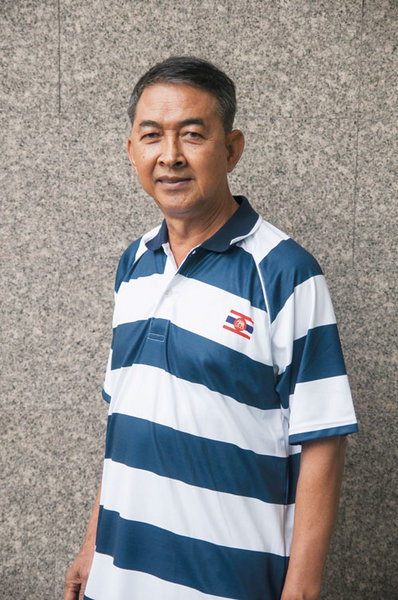 What’s the current state of Thai fencing?
What’s the current state of Thai fencing?
We’ve been through lots of problems. Not so long ago we had no budget so the athletes had no coach and no team manager, so had to do everything on their own. Even now, the executives of the association are doing their jobs as unpaid volunteers.
How do you explain fencing’s lack of popularity in Thailand?
Firstly, fencing isn’t a sport that easy to approach like football or boxing. It requires a huge amount of money compared to other sports with cheaper equipment; it’s more than B20,000 for a full fencing set. Fencing is really popular at US universities, who are hiring all the best coaches from Europe. As the demand is so high, we can’t afford to hire a foreign coach. Our education system also prevents athletes from putting their full efforts into practicing. They should have the time to train for six hours, six days a week, but their classes leave them only two hours a day. We also don’t have a proper facility, after the Sports Authority reassigned our association gym for something else. Luckily, the Air Force has lent us one of their gyms for our national team. I’m hopeful of a bright future now that we have elected Wiradech as team manager. He knows what it takes to do better.
What do you think about politics in sports?
I think it’s a necessity. But we must be careful to involve only those for whom Thai sports, not personal interest, come first. Developing sports require lots of investment. If we don’t invest, then we have no chance of improving.

 What is the current state of Thai basketball?
What is the current state of Thai basketball?
Our basketball teams have underperformed for a long time, maybe 10 years, because the association didn’t pay enough attention to training young players to replace the old athletes who retired. The old system of searching for potential athletes and bringing them to train in Bangkok is destroying us. We must realize that 90% of our athletes come from rural areas so we are much better off developing basketball at the grassroots nationwide.
Why is basketball struggling to attract support?
I played for the national basketball team 48 years ago and have been in basketball circles all my life. We lack planning. No one will support us if we can’t show to them that we can really make it. I’ve invested B1-2 million of my own money to boost basketball, both in terms of training and competitions. We need the public, the government and the private sector to pay more attention to us. If our teams perform well, then people will support them. We’re in pretty good shape right now: our under-18 team just finished fifth at the Asian Championships in October. We try to organize basketball tournaments at least twice a year. I want to do more but we have a limited budget and not enough teams to play all year round. We only have 6-8 teams in the league.
What’s the plan for the future?
We’re aiming to become the number one country in ASEAN within three years. To do so, we must find the find the best athletes with the right builds for basketball. A human body can’t be bought, but tactics can. So, now we are choosing kids who are tall and strong so that we can then train them to be the best. We’re fortunate to have Joe Bryant, dad of NBA superstar Kobe Bryant, as our head coach. He’s now chasing opportunities for our athletes to train in the US for short periods of time. Hopefully, the future is bright for basketball.
Advertisement